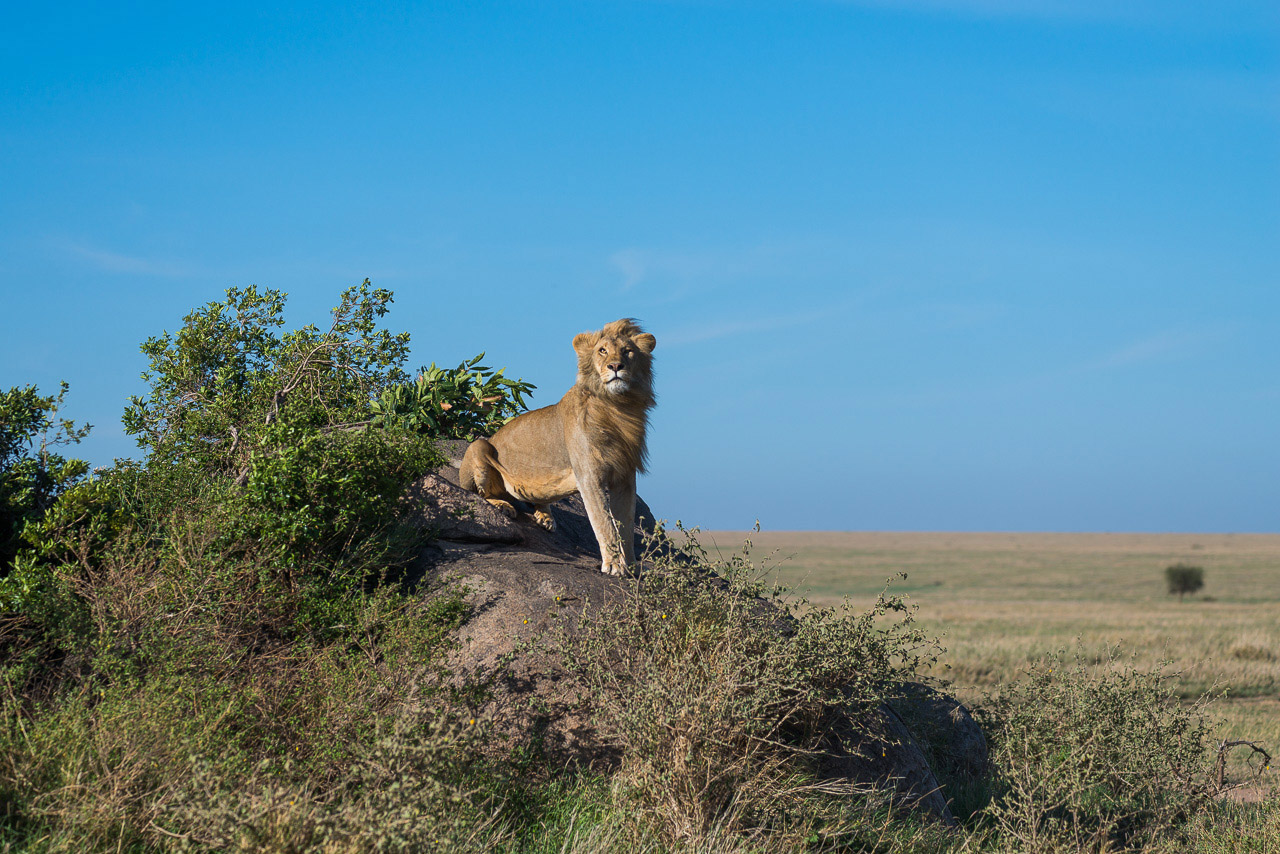

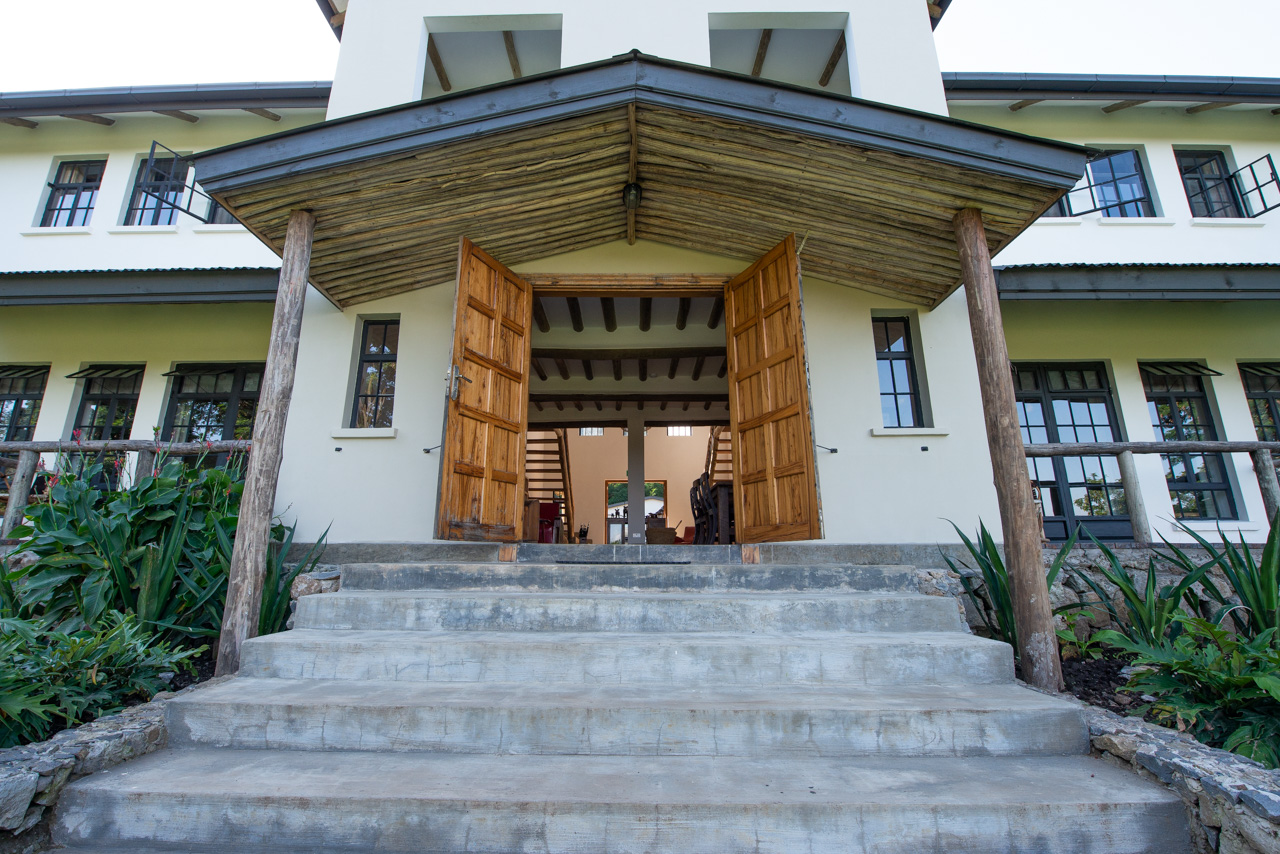
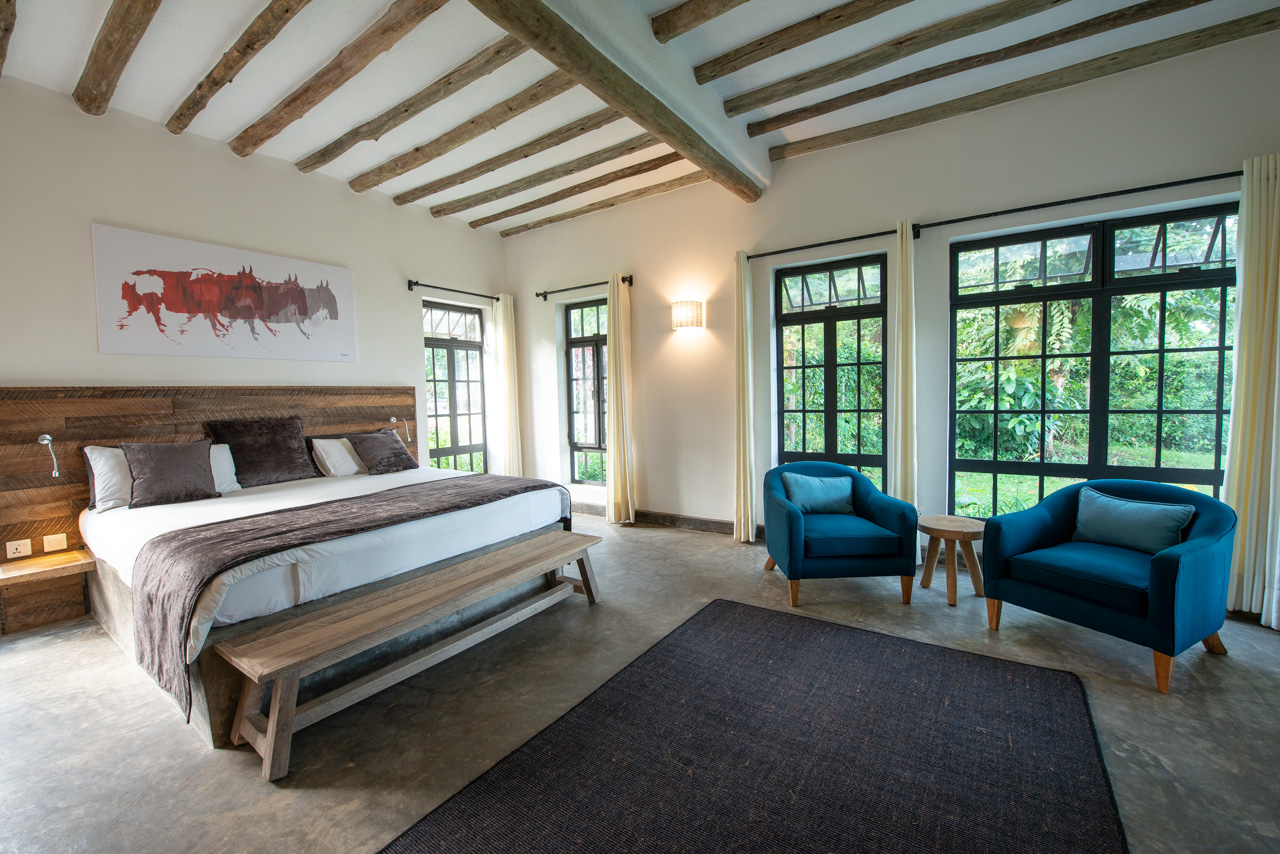
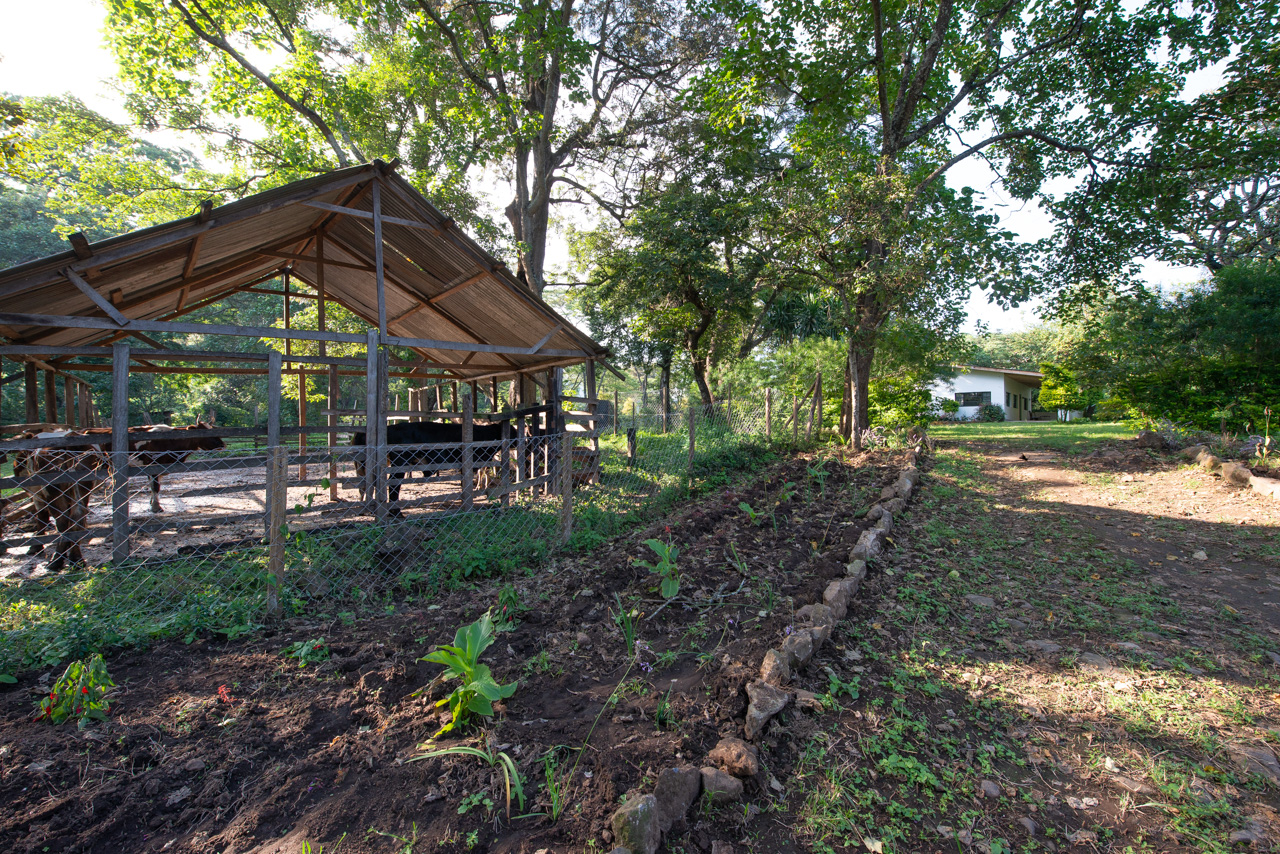
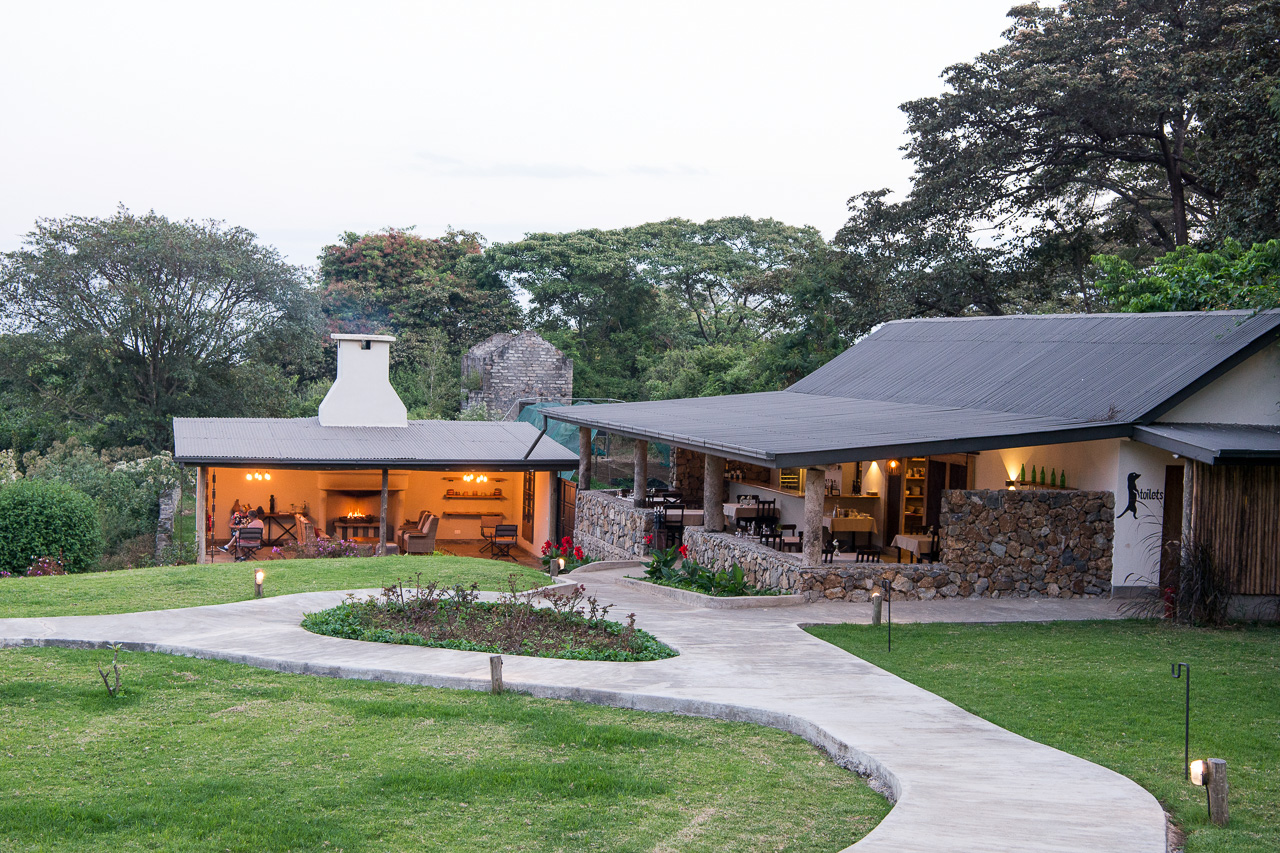
Accommodation
The six luxurious rooms and two family rooms of the Arusha Villa are set in a beautiful garden with Mount Meru and Mount Kilimanjaro in the background. The spacious rooms have en-suite bathrooms, king-size beds, a sitting area and a private balcony or terrace.
Arusha Villa was originally a coffee roastery. In the garden elements from this time are still recognizable, for example around the pool, where in earlier days the coffee beans were washed. The beautiful garden overlooking the countryside invites you to rest in the sun. With a little luck, you‘ll even spot a Colobus Monkey in the treetops.
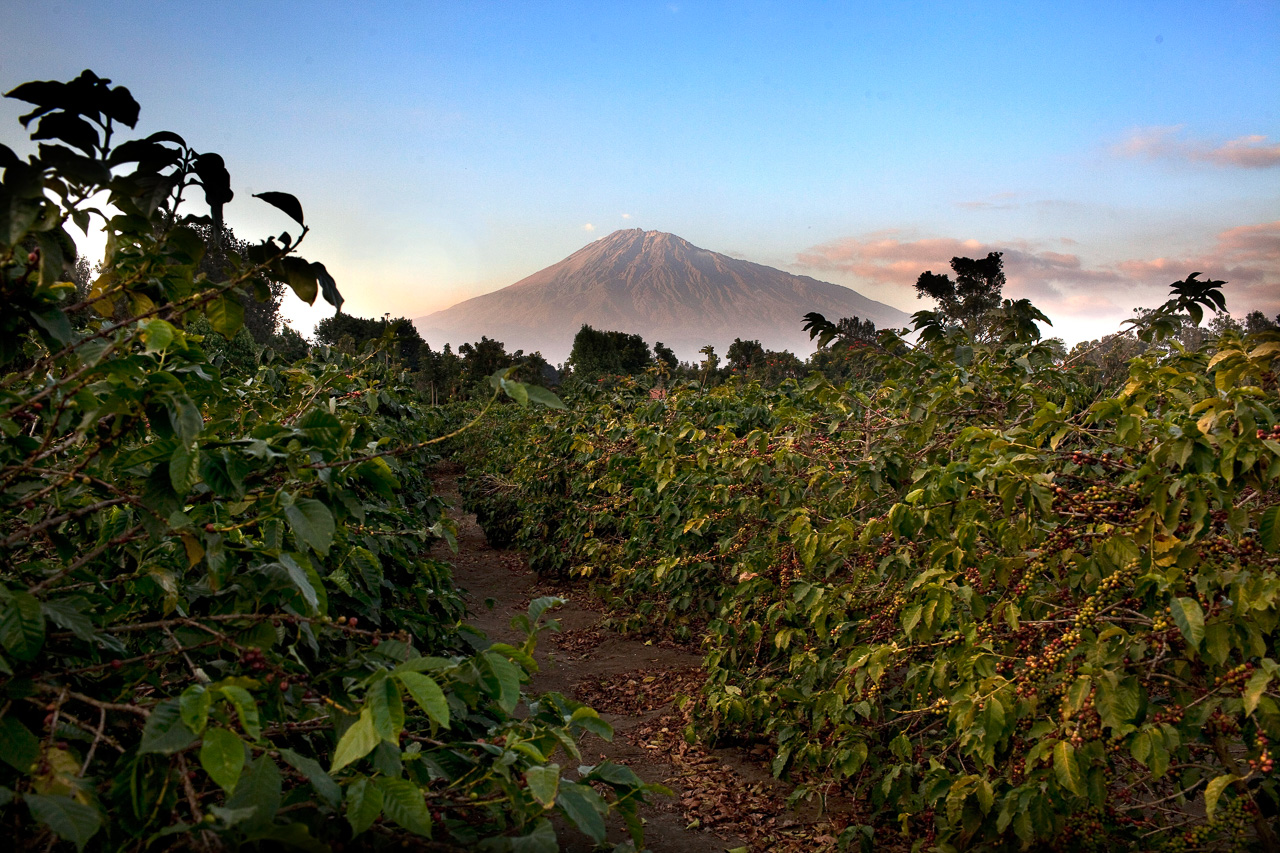
Most visitors spend one night here after arriving on their international flight before beginning their safari the next day. Kilimanjaro International Airport is located approximately one hours’ drive from Arusha on the road cmoing in from Moshi.
Arusha's most famous landmark is Mount Meru, a dormant volcano that rises more than 4,500 m out of the ground in the west. The Ngurdoto Crater is located on the other side of the park, and the Momella Lakes sit between.
Arusha itself has grown considerably in recent years and there are probably around 650,000 people living in the city. The population has increased tenfold since the 1970s! In addition to tourism, Arusha lives from the trade in coffee and agricultural products and also increasingly from the export of cut flowers. Arusha lies at an altitude of 1,400 meters above sea level and the climate is quite pleasant with an average temperature of around 25° Celsius.
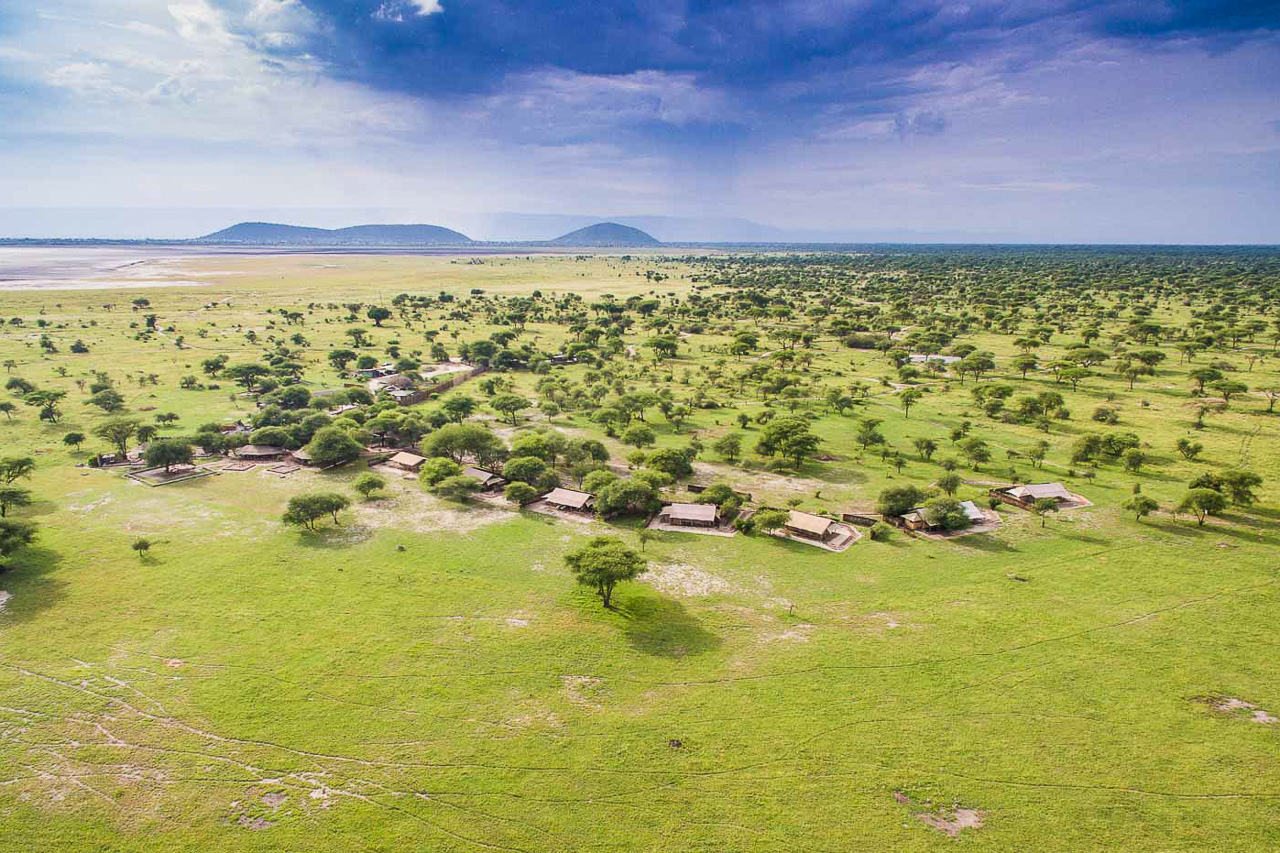


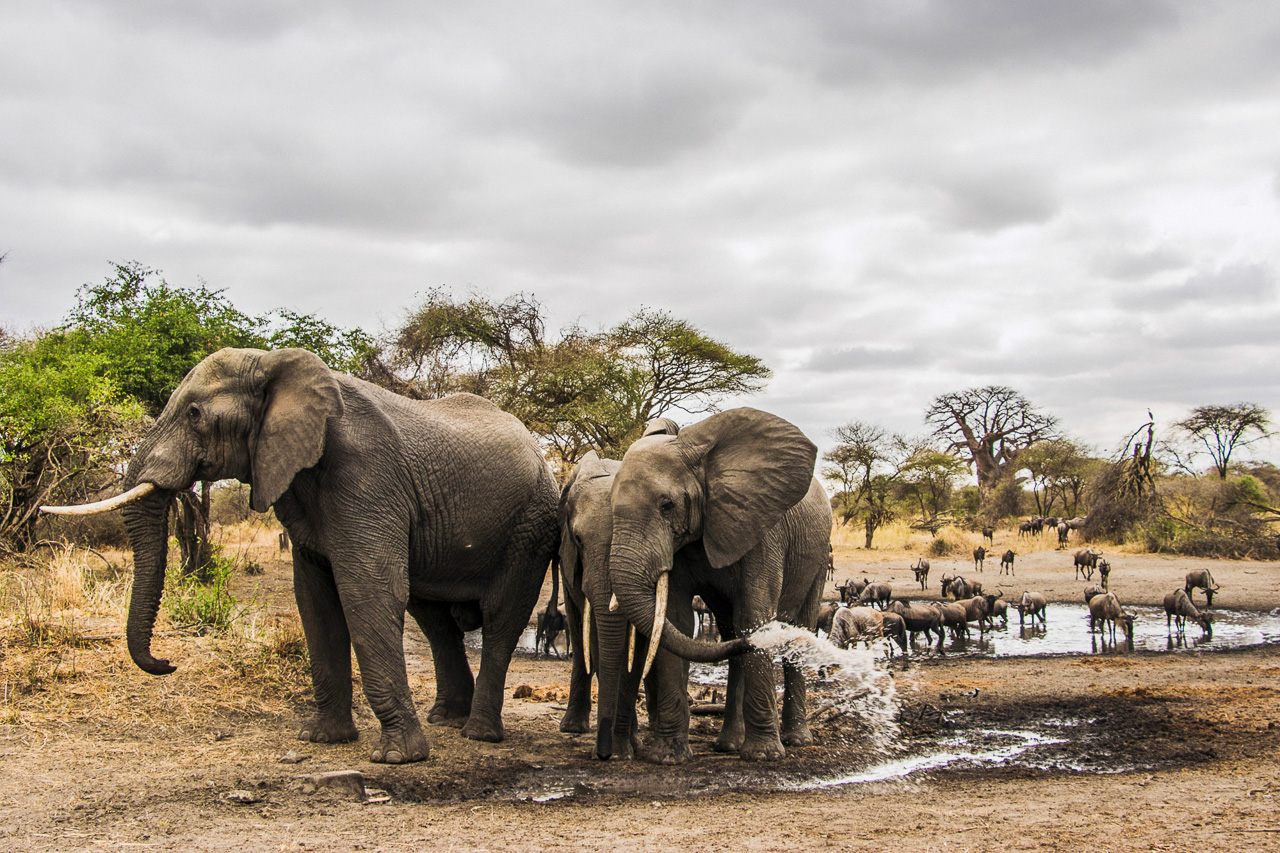
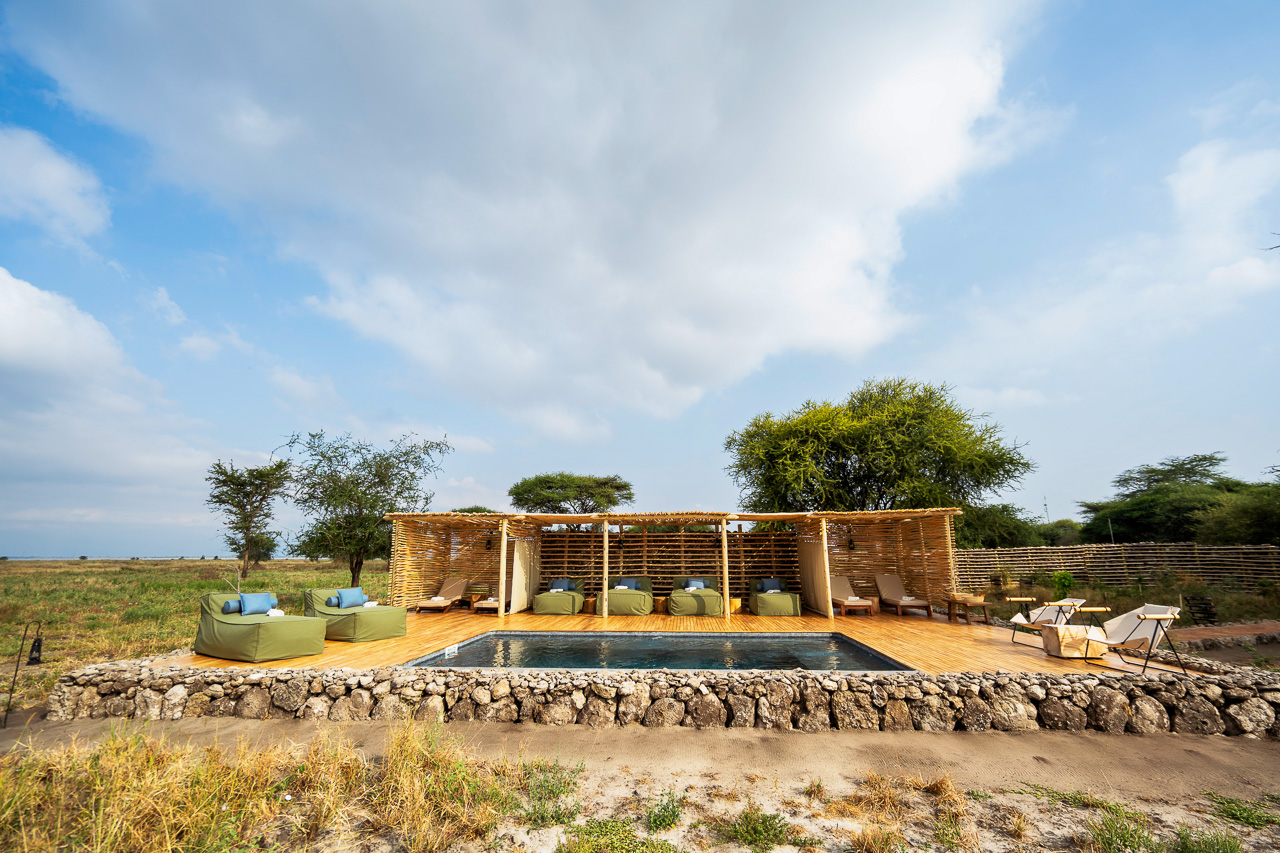
Accommodation Little Chem Chem, known as the sunrise camp, offers five exquisitely decorated double tents and one family tent, each with a large bedroom (three have king-size beds, two offer twin beds), with a rocking chair and study desk, a vanity area with dressing room and an en suite bathroom with a shower and flushing toilet.
The main area consists of several lounge and mess tents, each stylishly decorated. At night the camp is light by many lanterns. Embracing an ‘Out-of-Africa’ atmosphere all guests are offered a private table and fire pit with flames that mesmerise you as the sounds of an African night come to life. Service and food are usually excellent.
Chem Chem's portfolio also includes: Chem Chem Safari Lodge & Forest Chem Chem
Little Chem Chem is located on the eastern side of the concession.
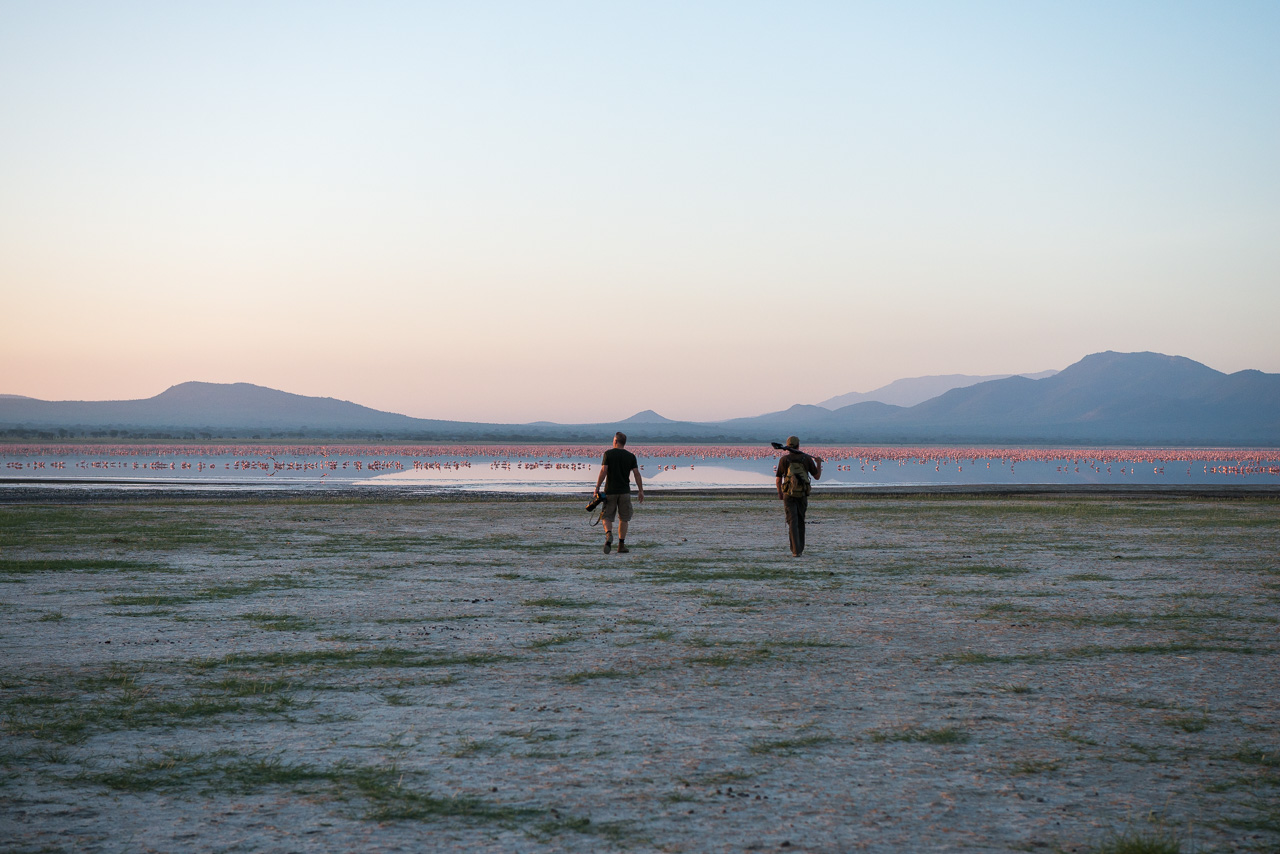
Today, the area is widely known for its large buffalo population that moves in and out of Tarangire. The presence of Lake Burunge in the WMA attracts the migration of water birds such as greater and lesser flamingoes and a range of ducks and shore birds.
The Chem Chem camps provide access to Lake Manyara, Lake Burunge and Tarangire National Park. It is one of the few places in Tanzania where guests have access to a private area. You can get very close to wildlife as off-roading is permitted in the private concession, as well as night drives and walking safaris.
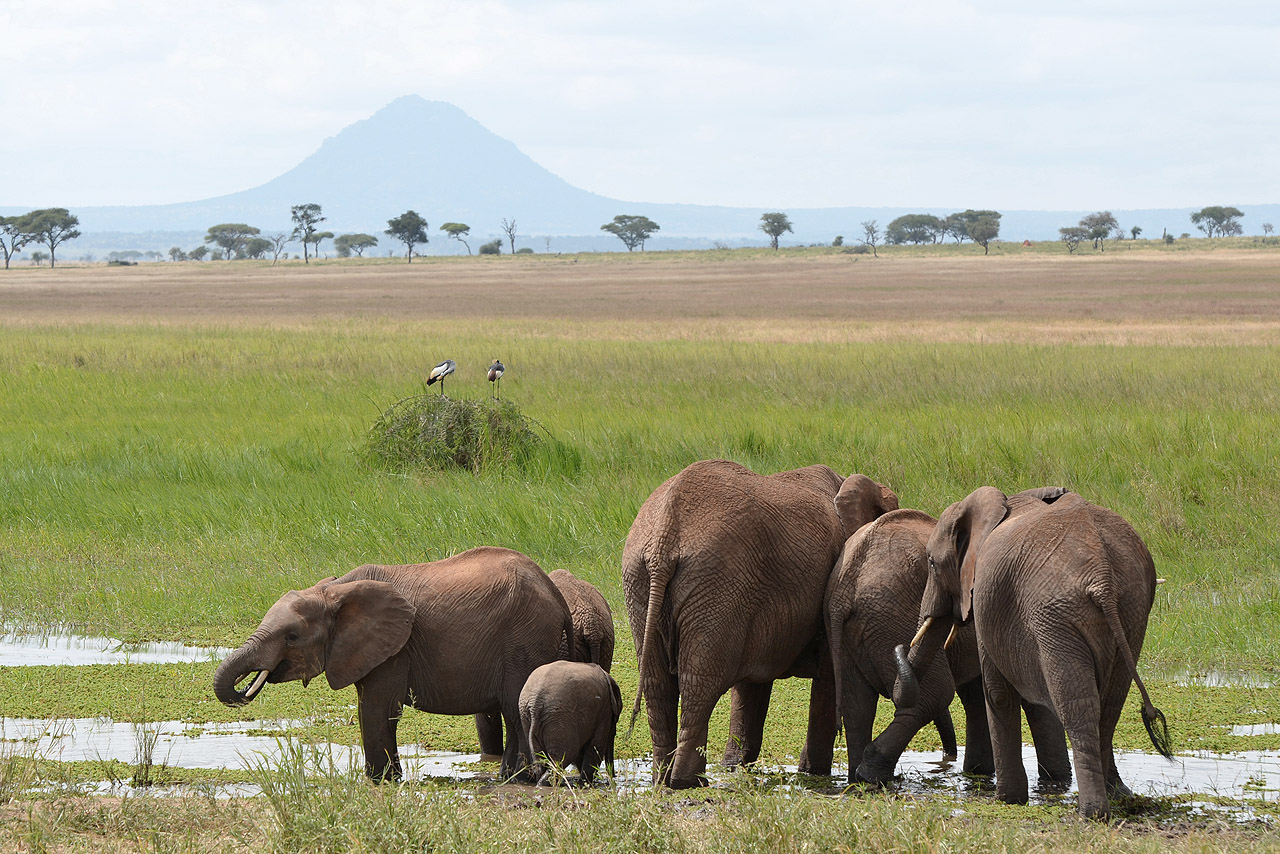
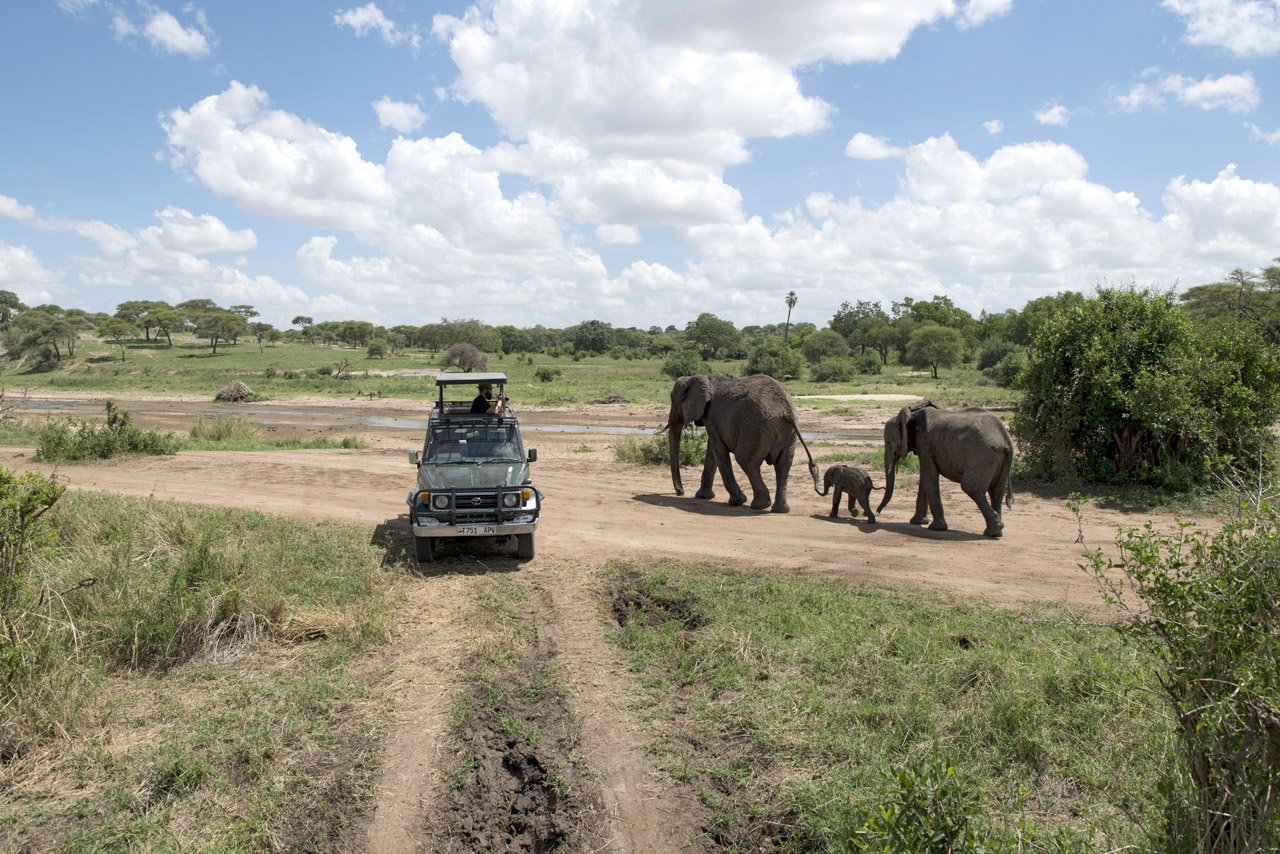
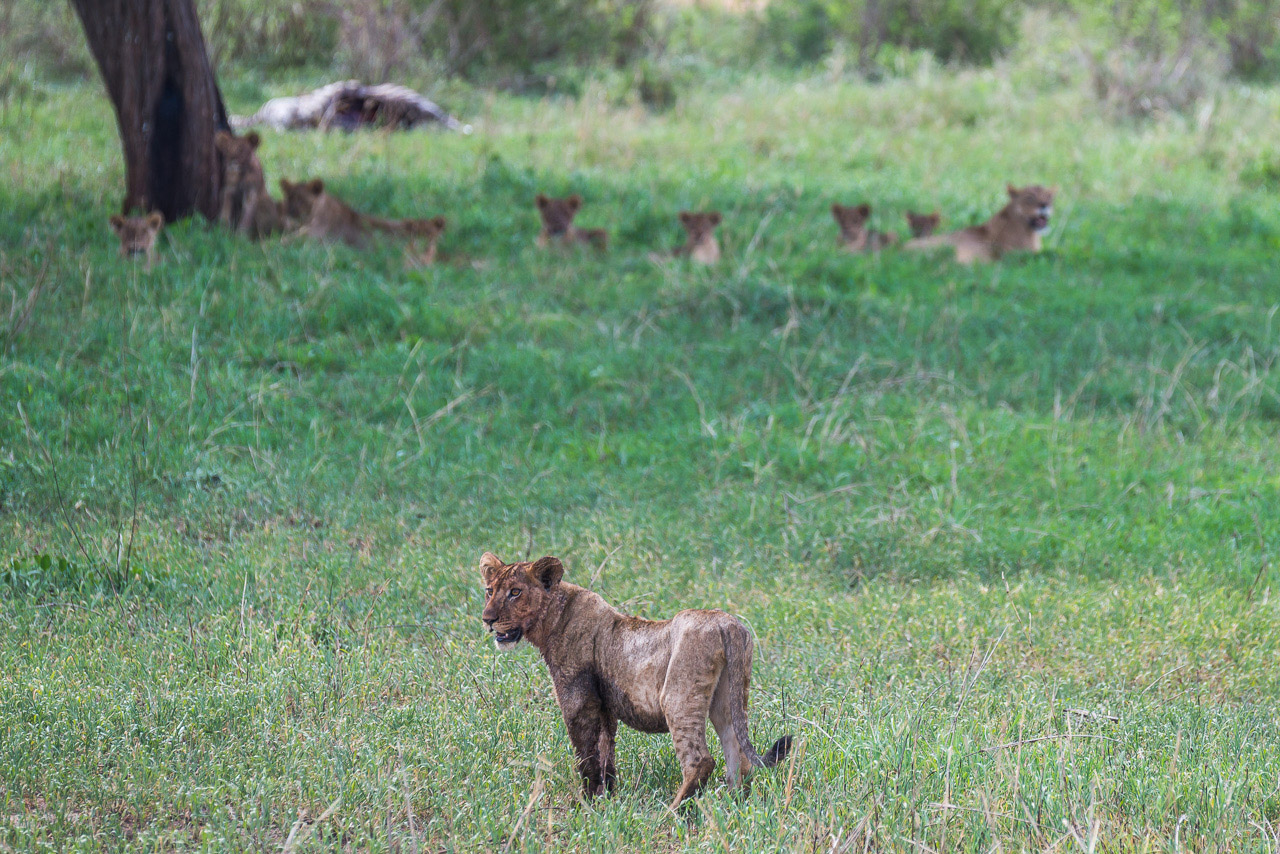
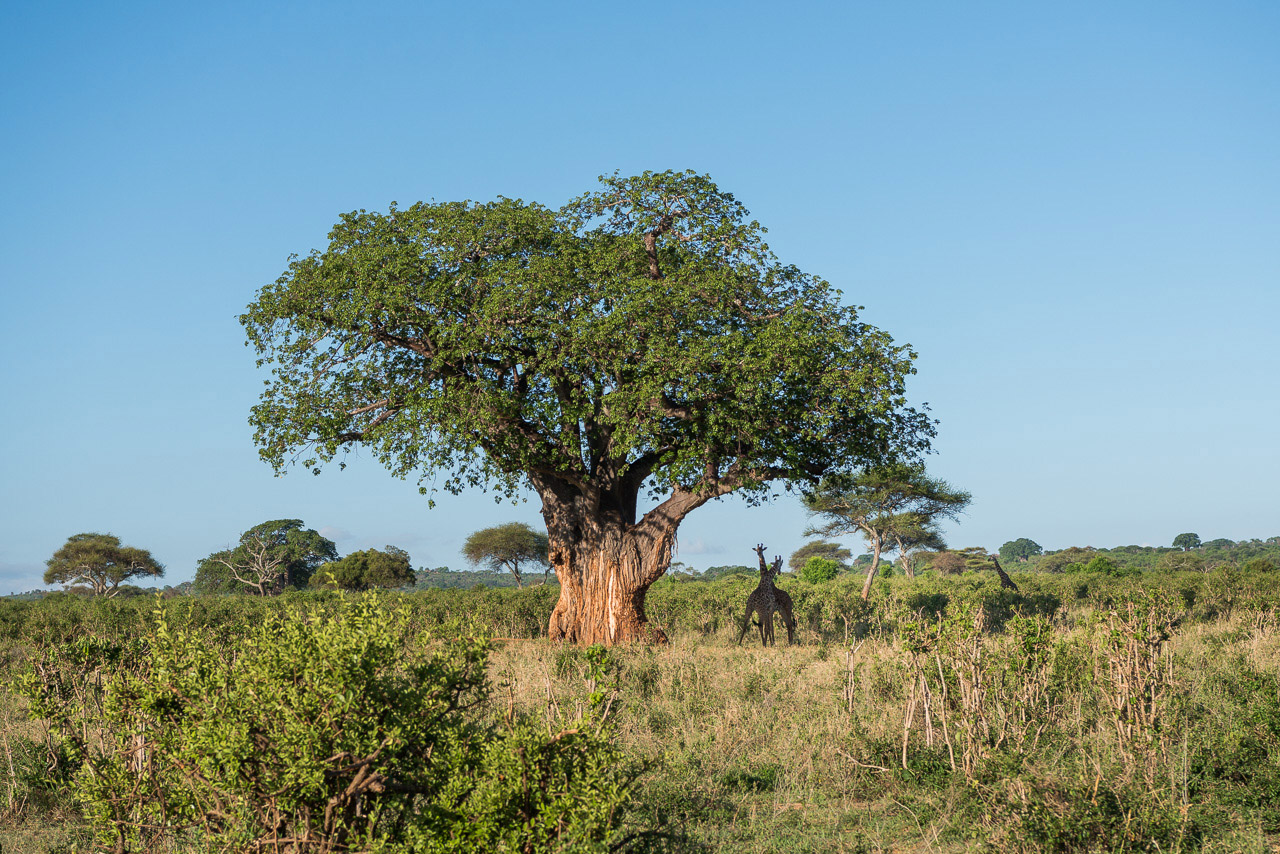
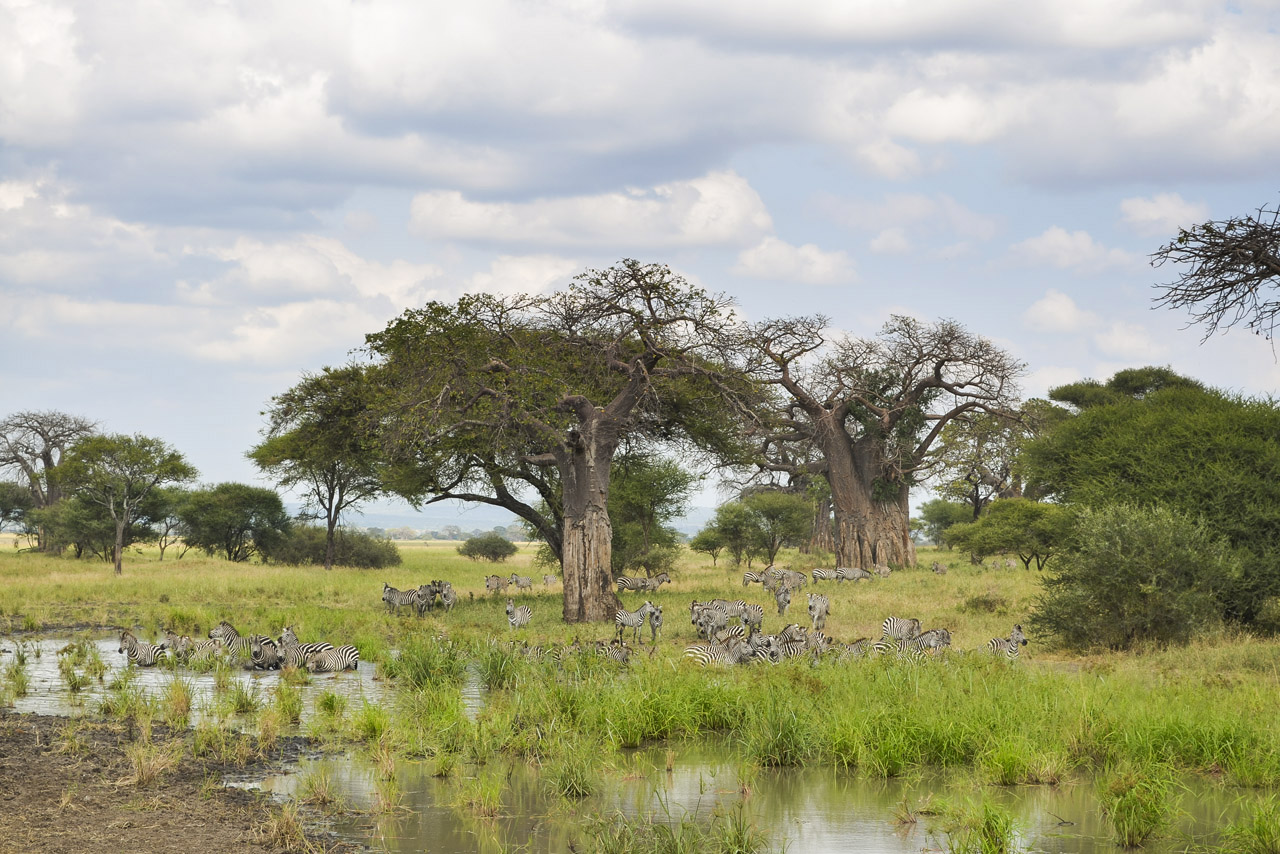
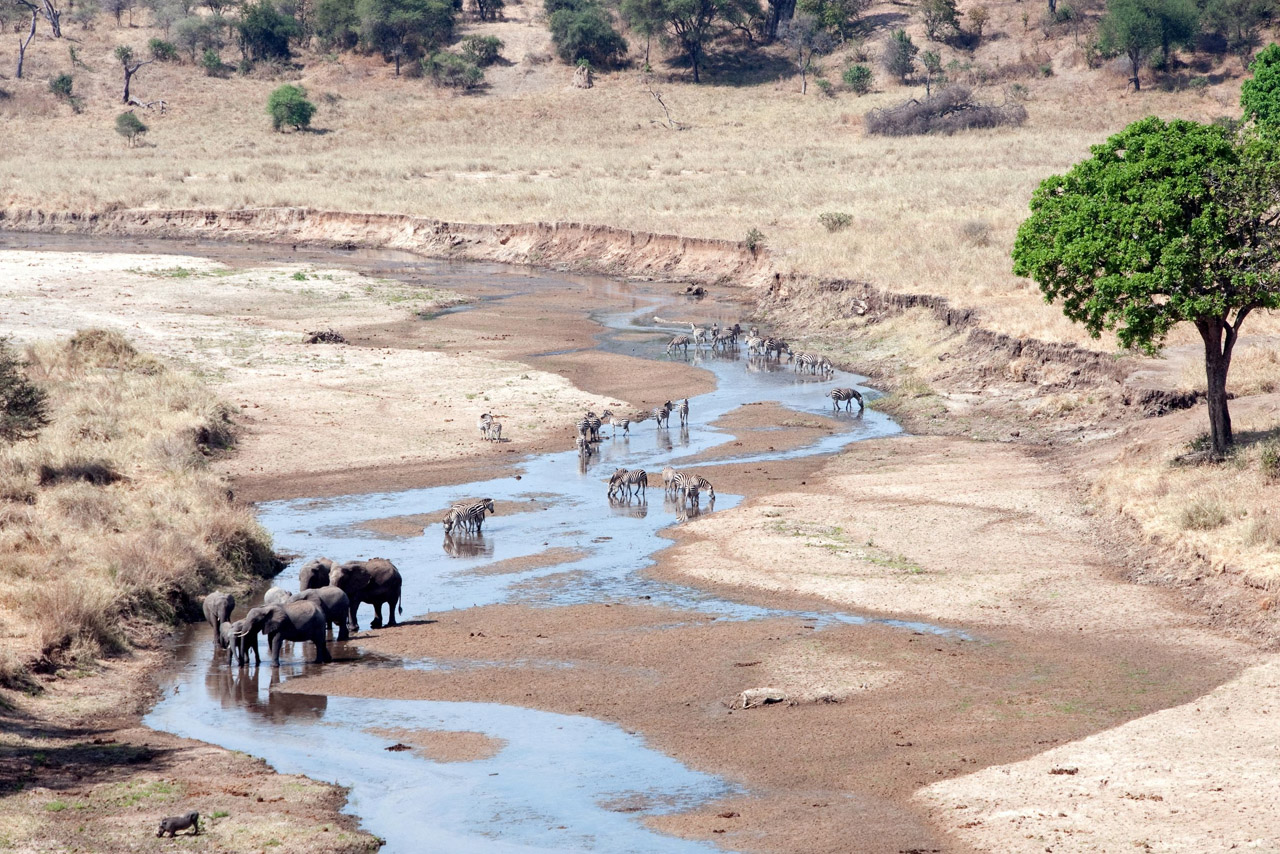
You can expect to see the Big-5 and during the dry months from July to October and some of the highest concentration of wildlife of any park in Tanzania.
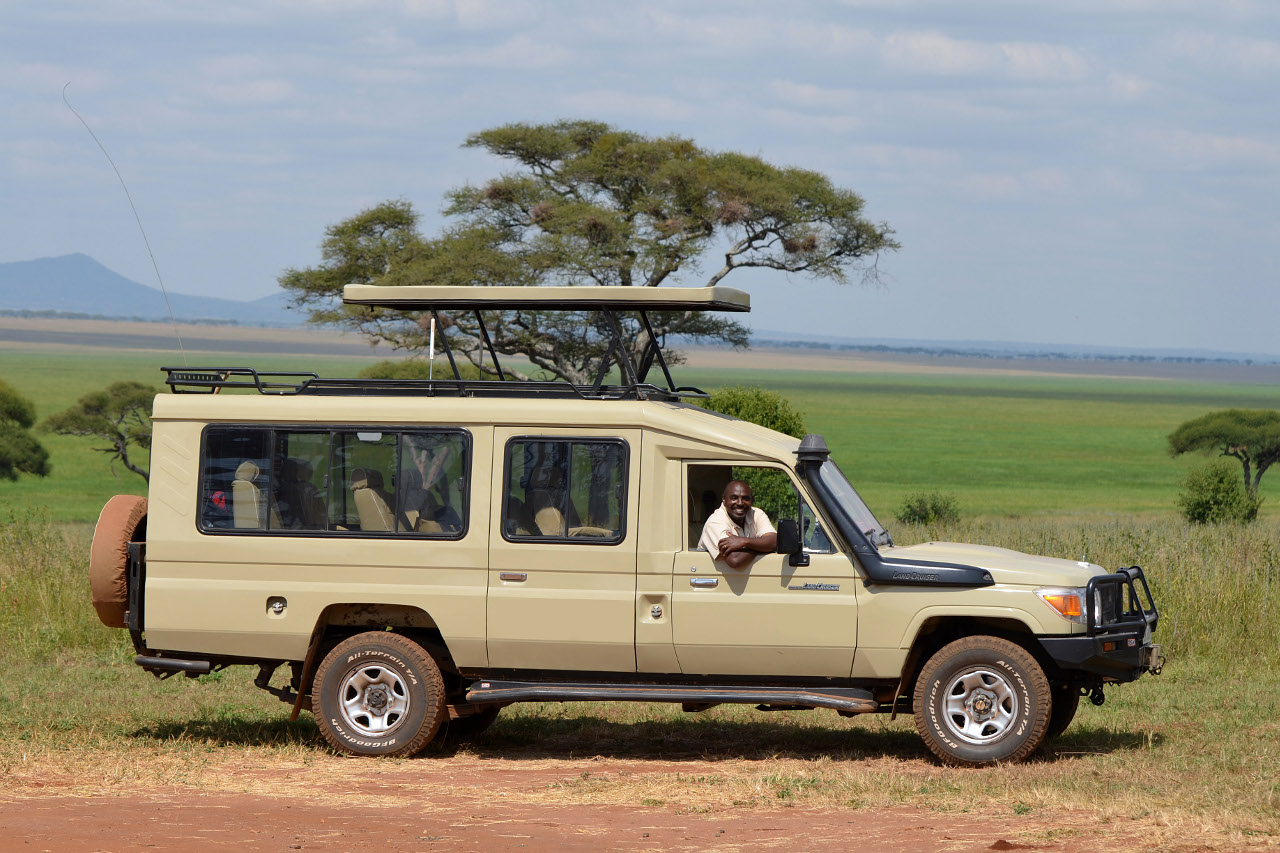
The comfortable Toyota LandCruiser 4 x 4 vehicles usually have six seats, a fridge with drinking water and a socket for charging camera equipment. The roof can be opened for game viewing - the classic safari in Tanzania.

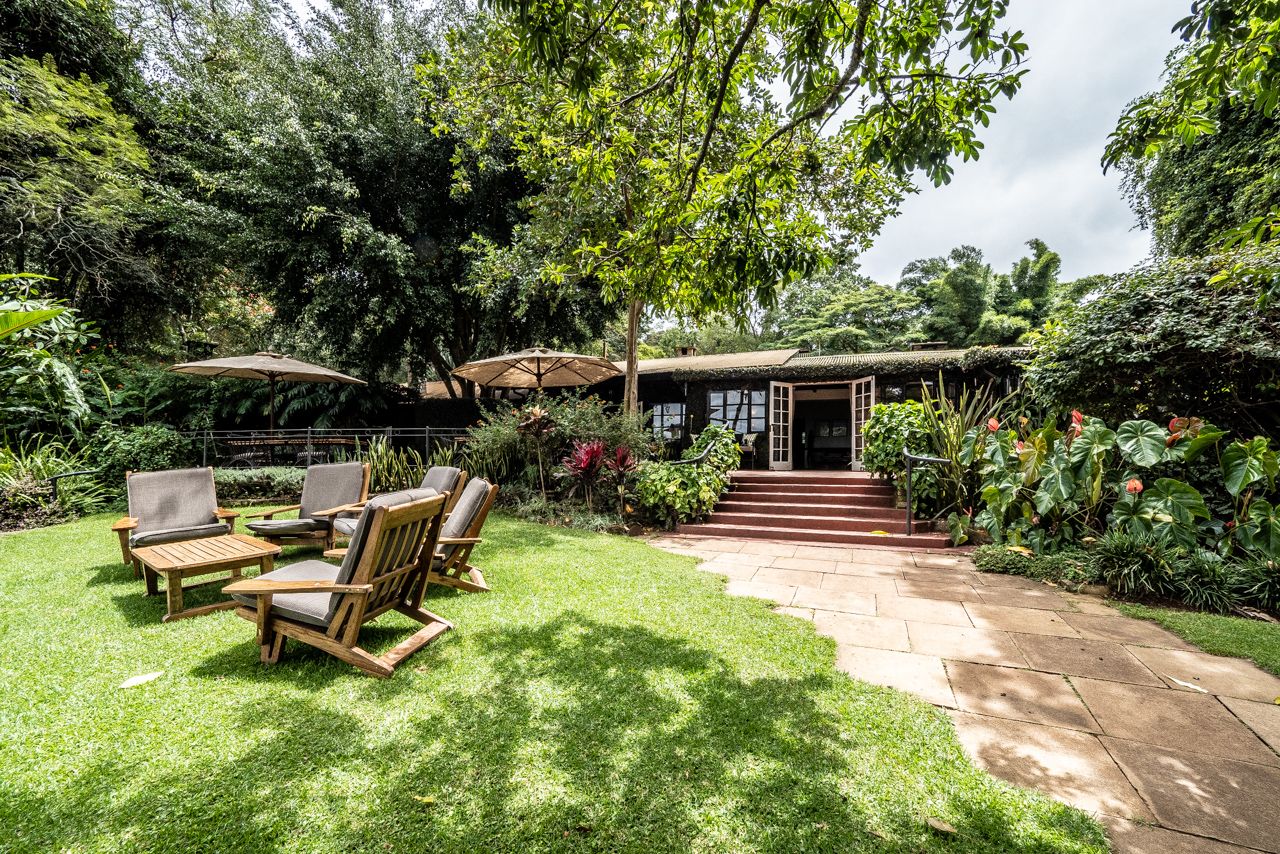
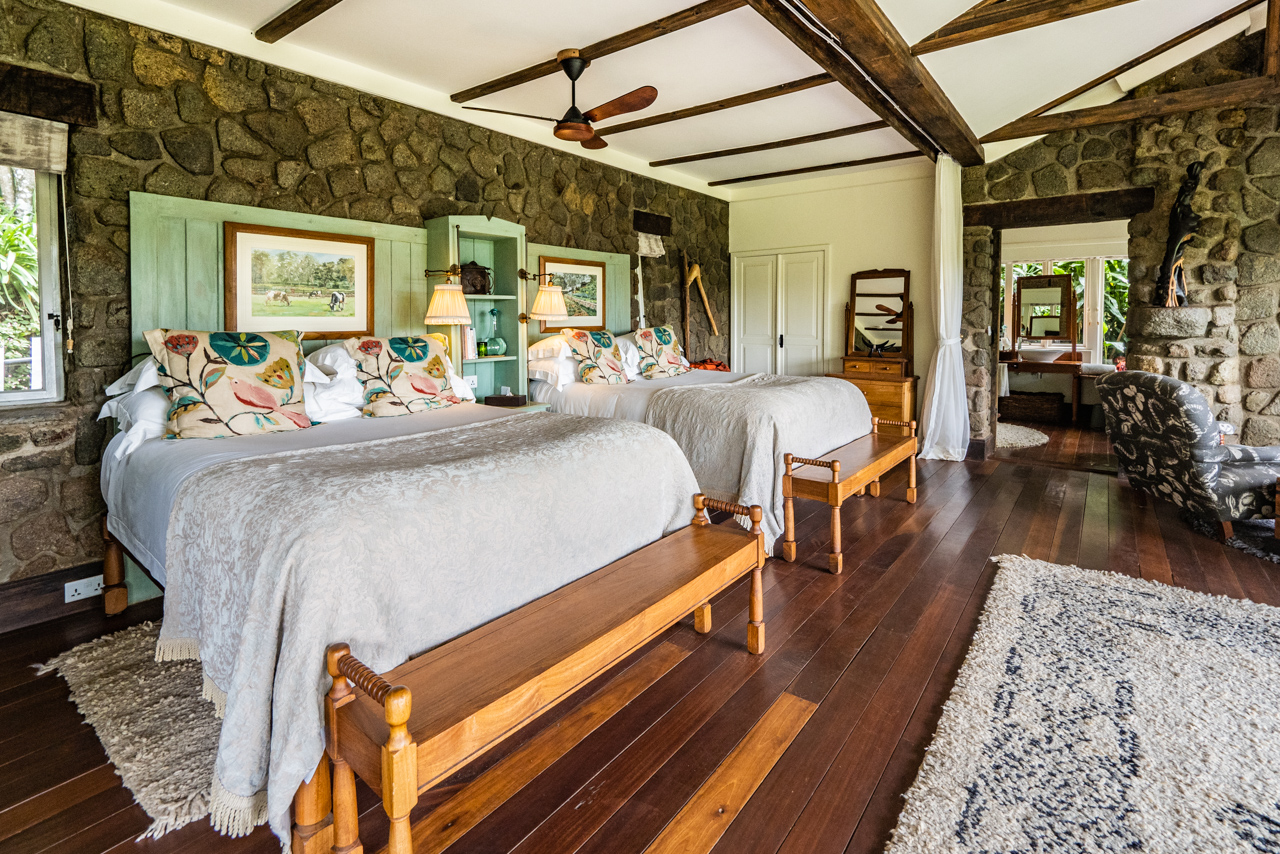
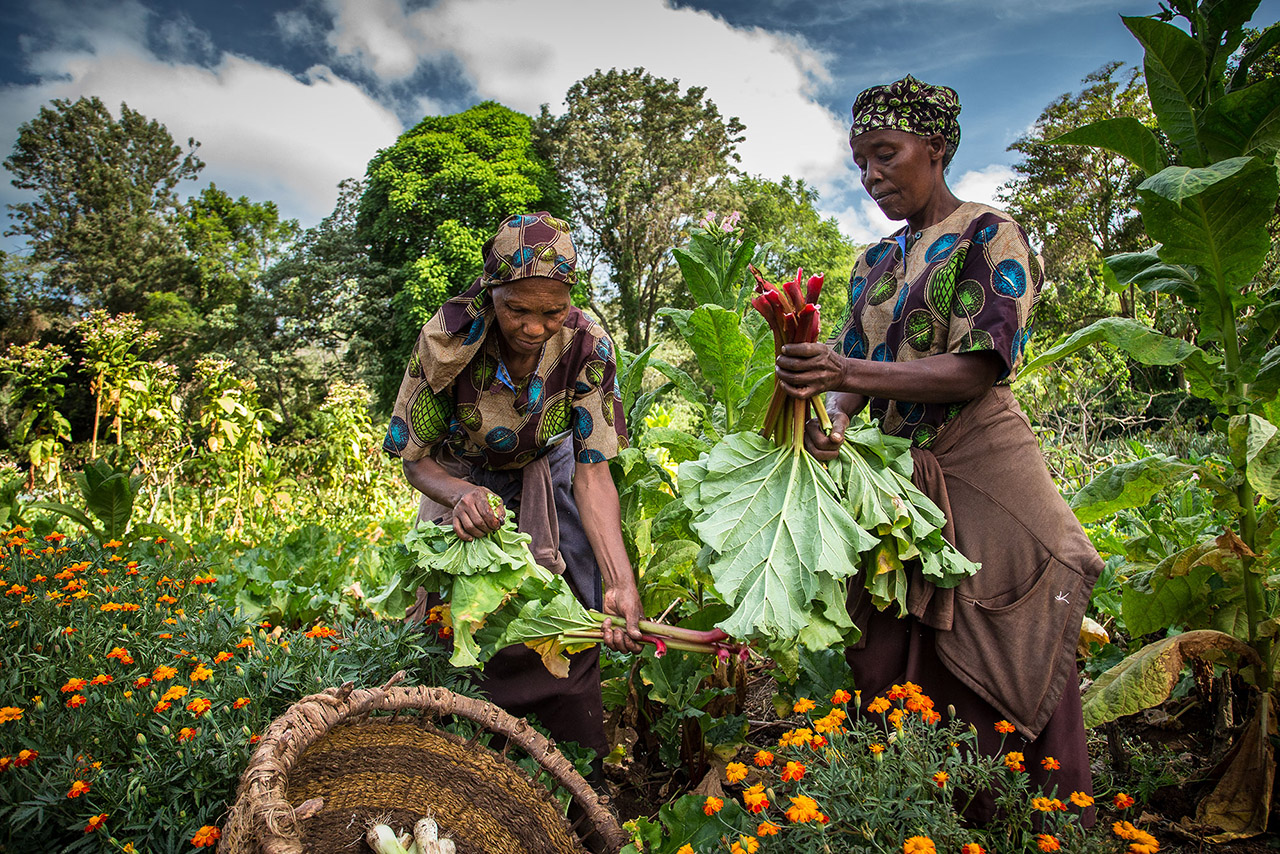
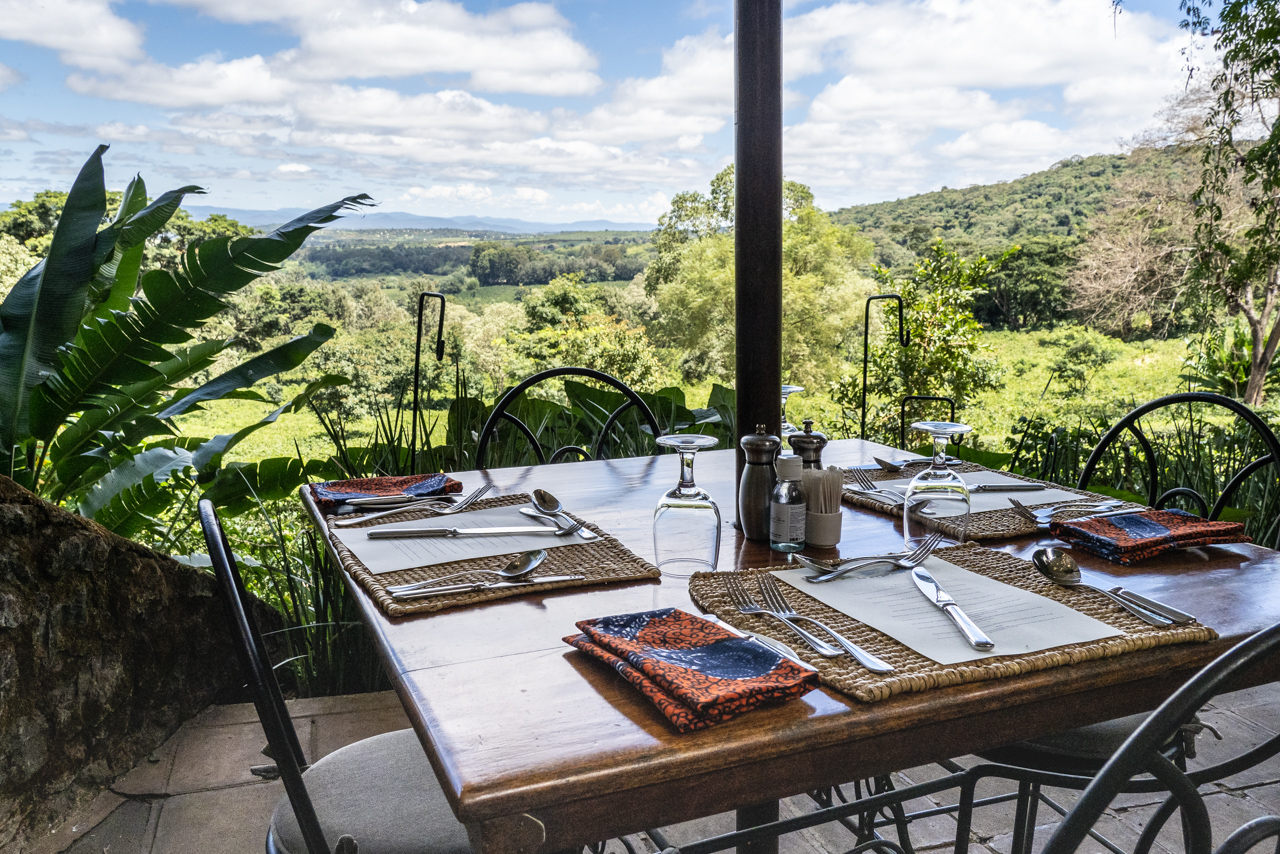
Accommodation Gibb's Farm is not only a smart destination for visiting safari guests, but also a working organic coffee, fruit and vegetable plantation. Originally built in 1929, the farm has been extending a warm welcome to guests for the past forty years.
It comprises 18 en-suite cottages, each equipped with fireplace, bathtub and veranda. Sympathetic refurbishment has continued to keep the main building up to date while retaining the farmhouse's original character.
Encircled by a historic English garden, the main building is where guests will find the restaurant, lounge and bar. The spectacular views from the veranda reach much further than the farm's plantation.
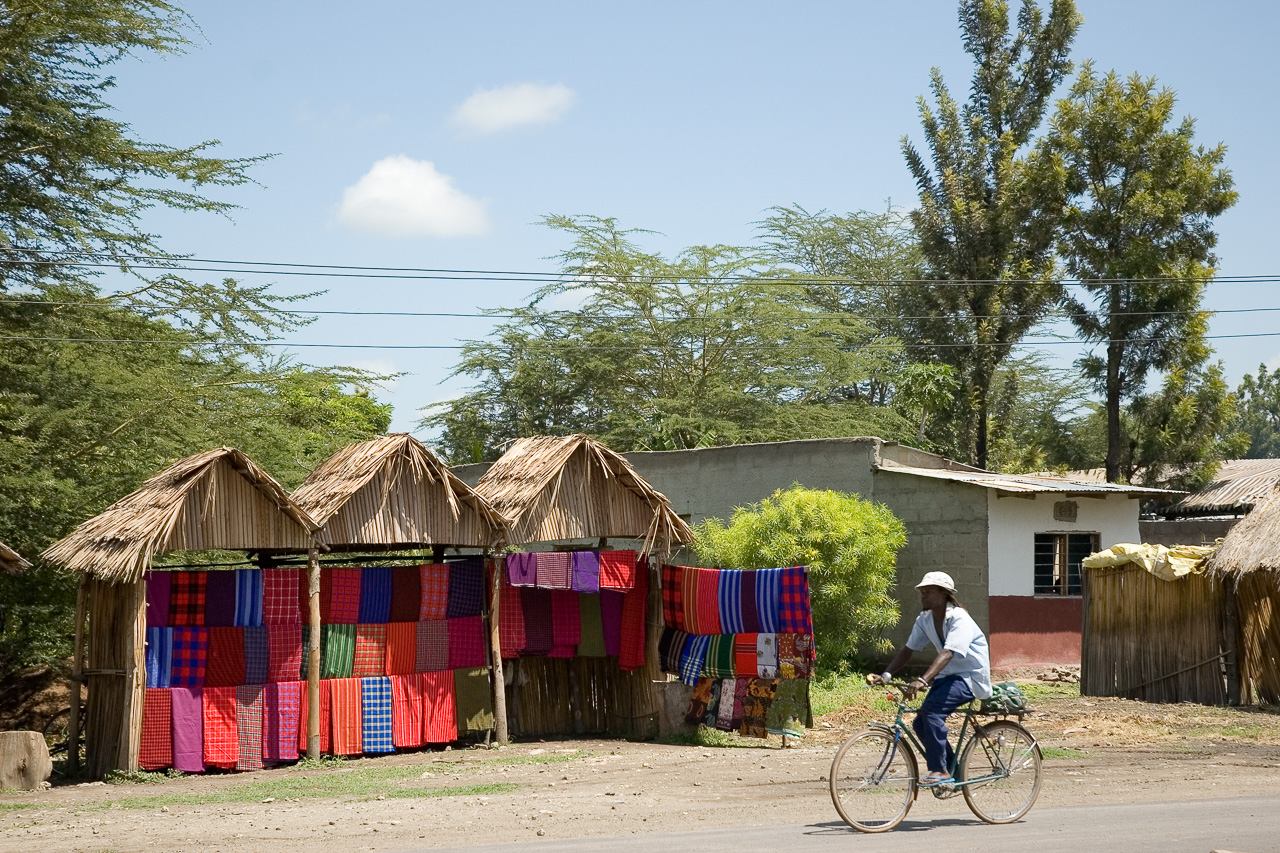
The cliffs of the Ngorongoro Crater receive a good amount of rainfall all year round. The altitude of the plateau around Karatu (1500 m), a small town with some 25’000 residents, offers a mild climate that is ideal for growing coffee, bananas and vegetables – which is something the German-East African authorities also knew when they supported the settlement of German farmers here at the end of the 19th century. Coffee is often planted together with banana trees, as their large leaves offer shade to the coffee plants.
A tarred road leads from Arusha via Lake Manyara to Karatu, which is where both the climb to the Ngorongoro Crater and the Serengeti ecosystem begins. The lodges in the Karatu region make the perfect base from which to explore the crater.
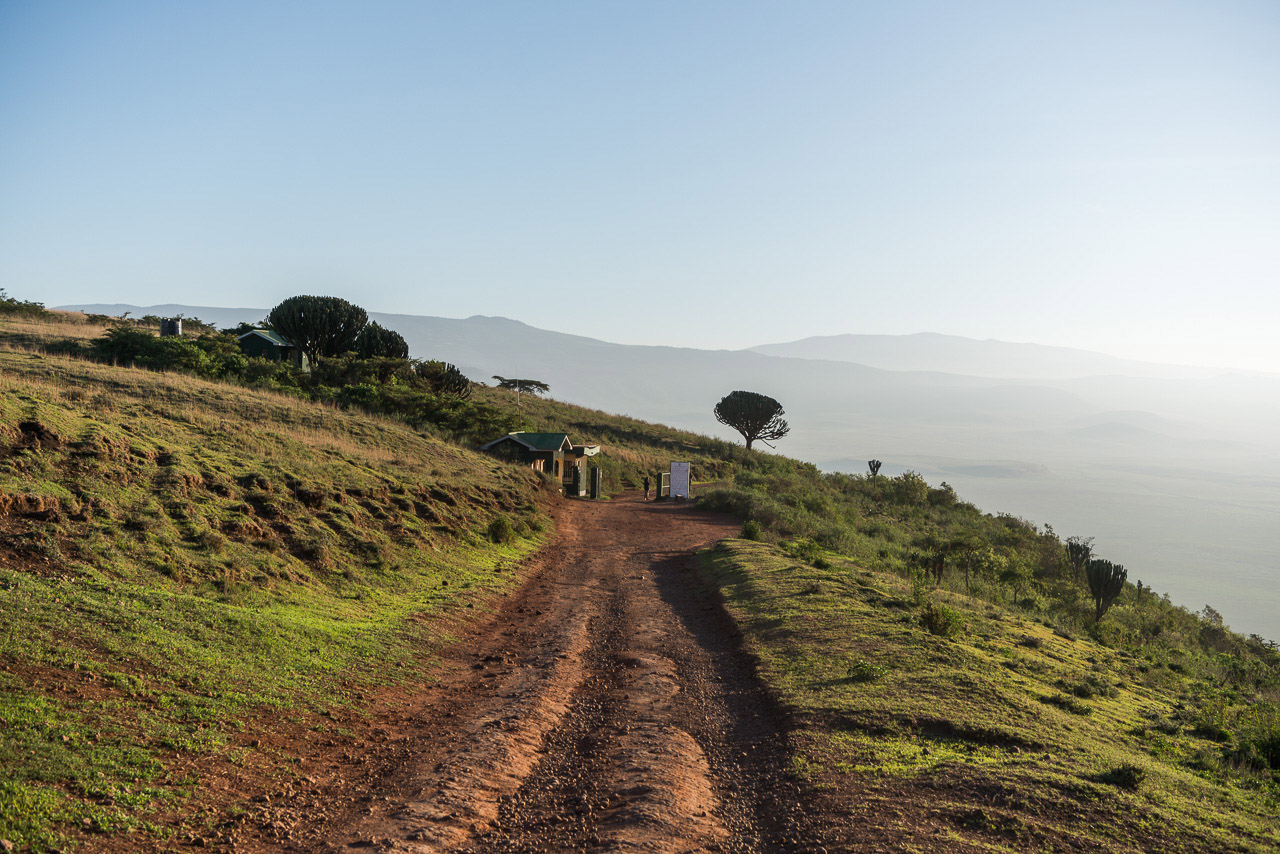
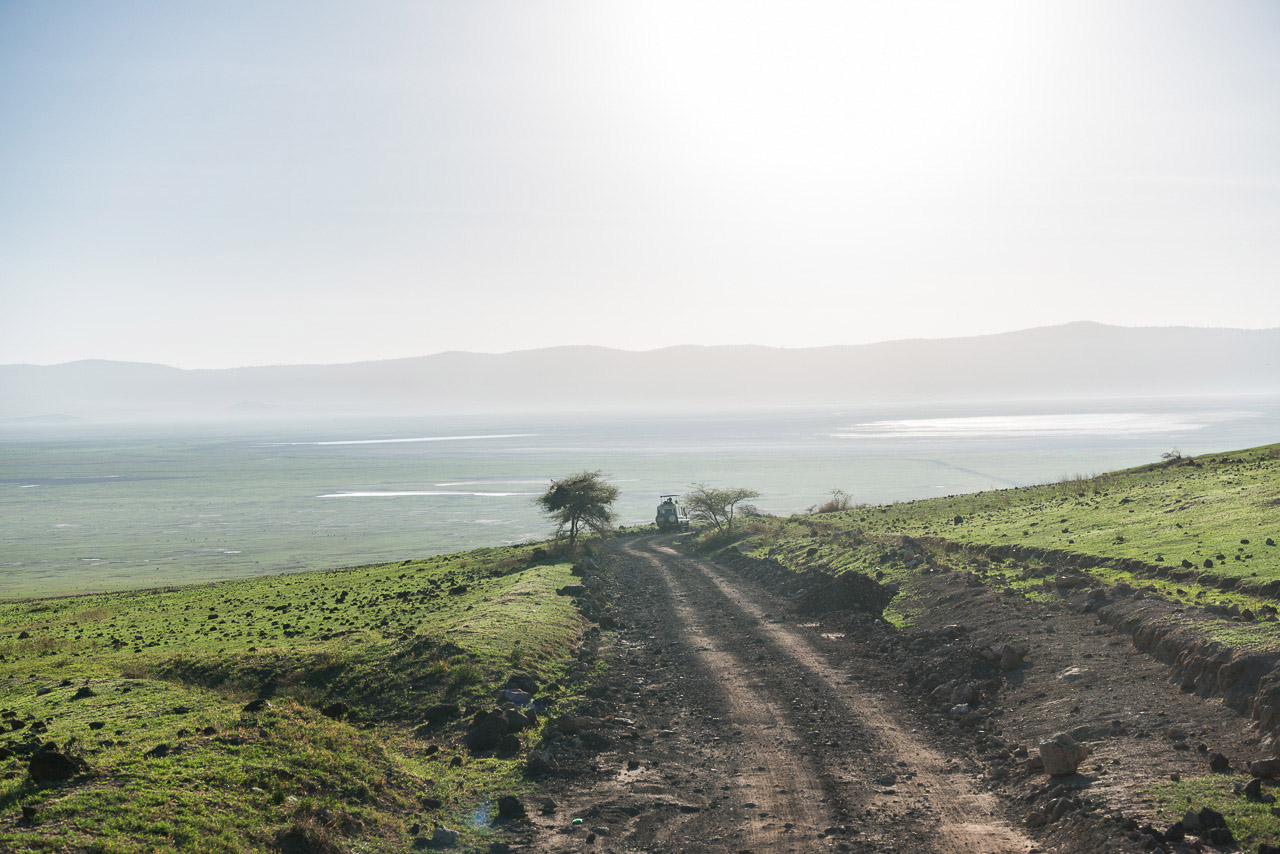
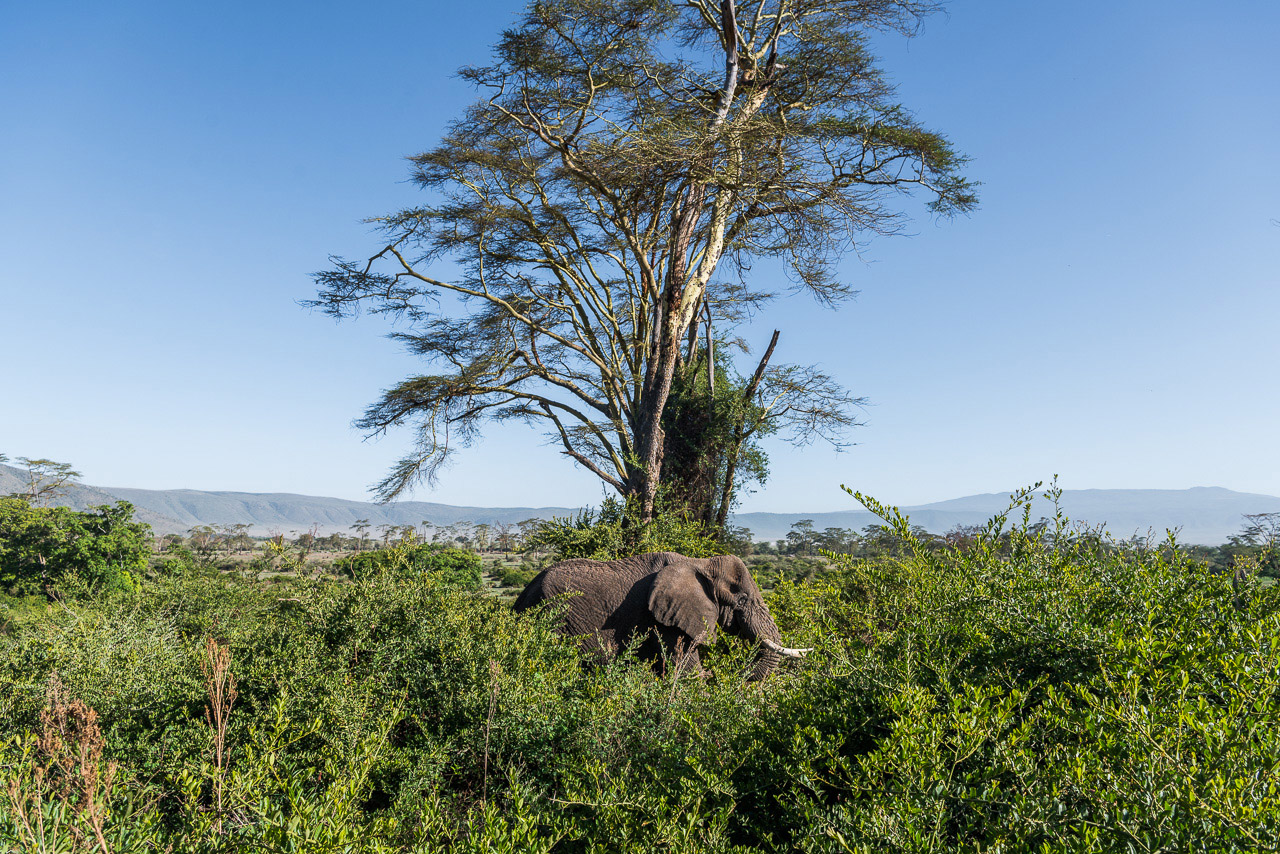
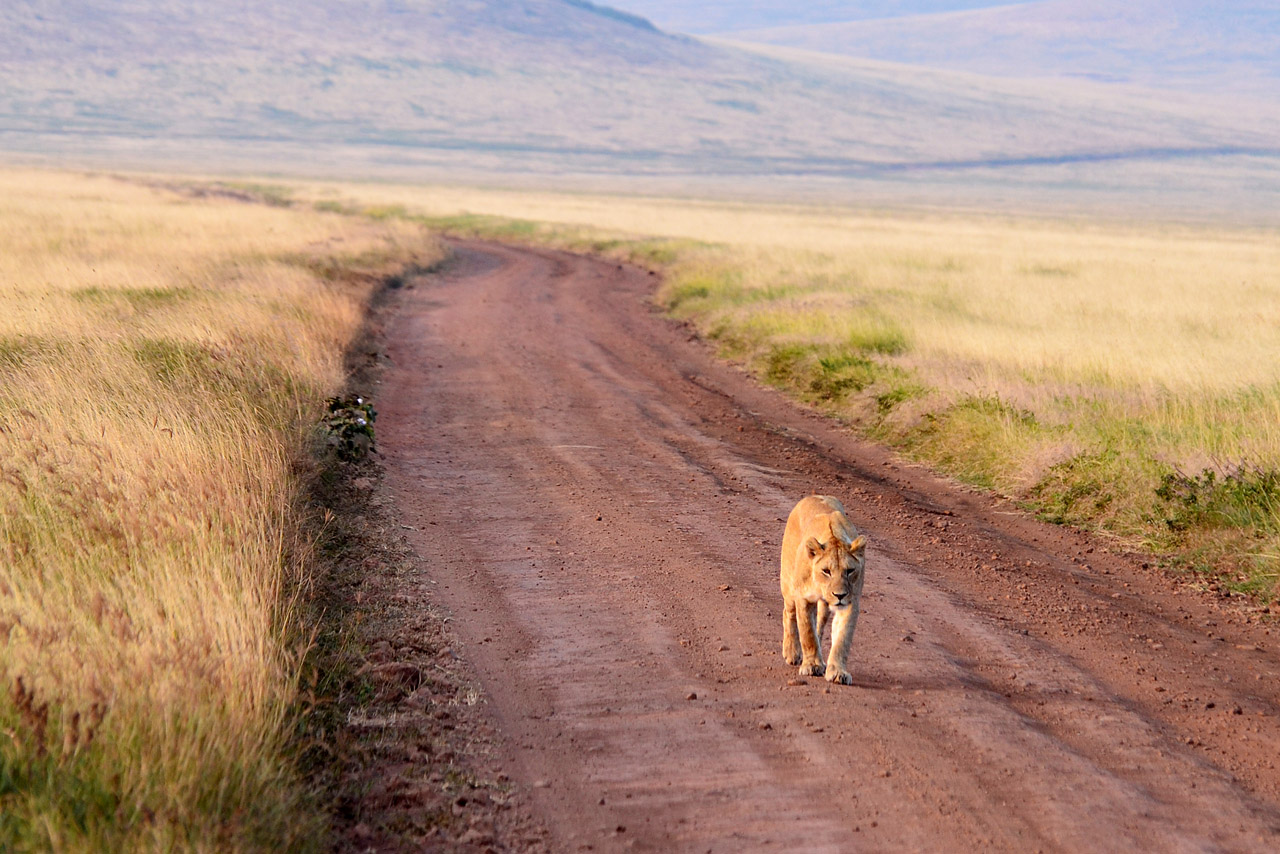

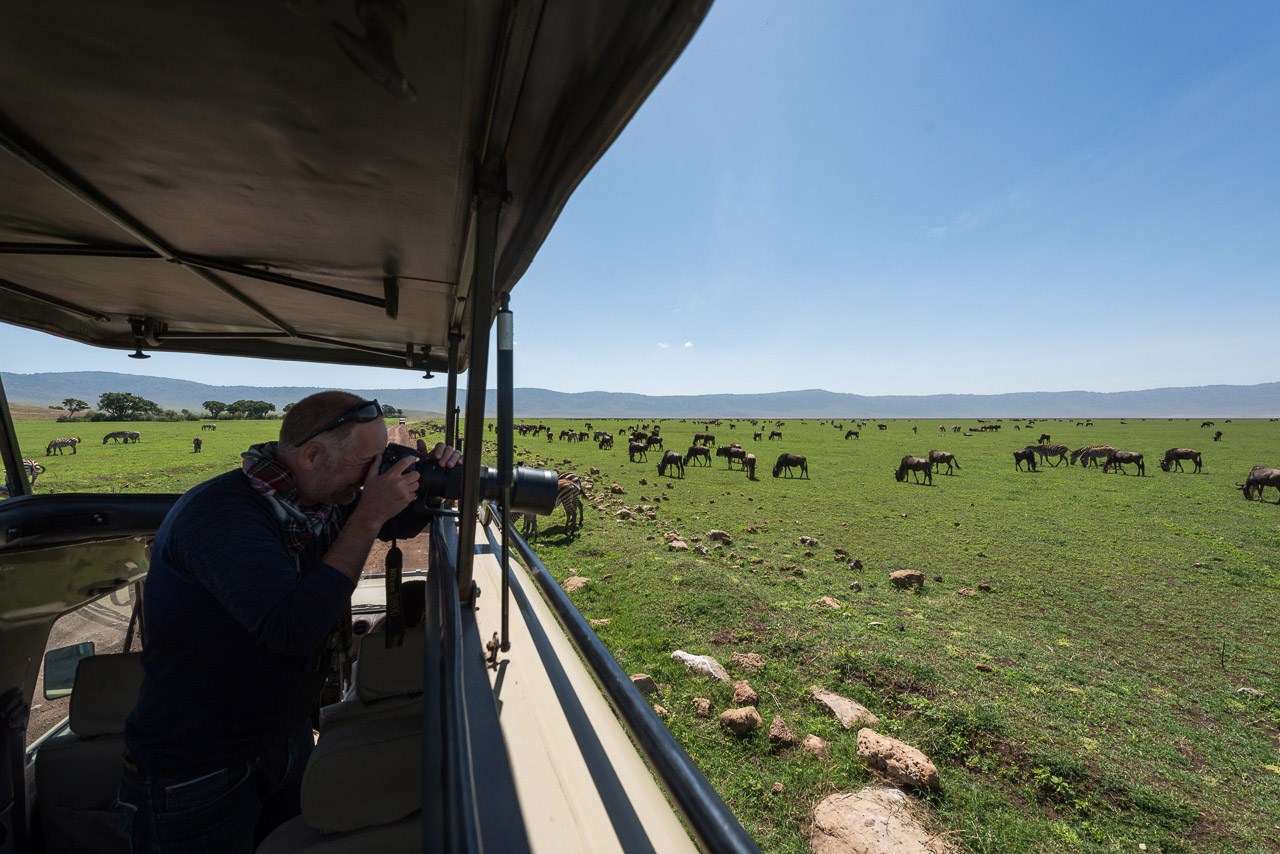
The Ngorongoro Crater is the world's largest inactive, intact, and unfilled volcanic caldera with 19km in diameter and walls 600m high. Its floor covers 260 square kilometres and acts like a natural zoo, providing food for a high resident animal population.
The mineral-rich crater floor is covered with nutritious grass and attracts large herds of animals. Up to 25’000 mammals, primarily herbivores can be found at any one time in the Ngorongoro Crater. The list includes wildebeest, eland, hartebeest, zebra, gazelle, buffalo, rhinos and warthog. Moors and forests provide food for hippo, elephant, baboon, waterbuck and bushbuck. Big cat such as lion, cheetah, leopard and serval find rich pickings here. Large packs of hyena also roam the crater, hunting or pinching the prey of other predators.

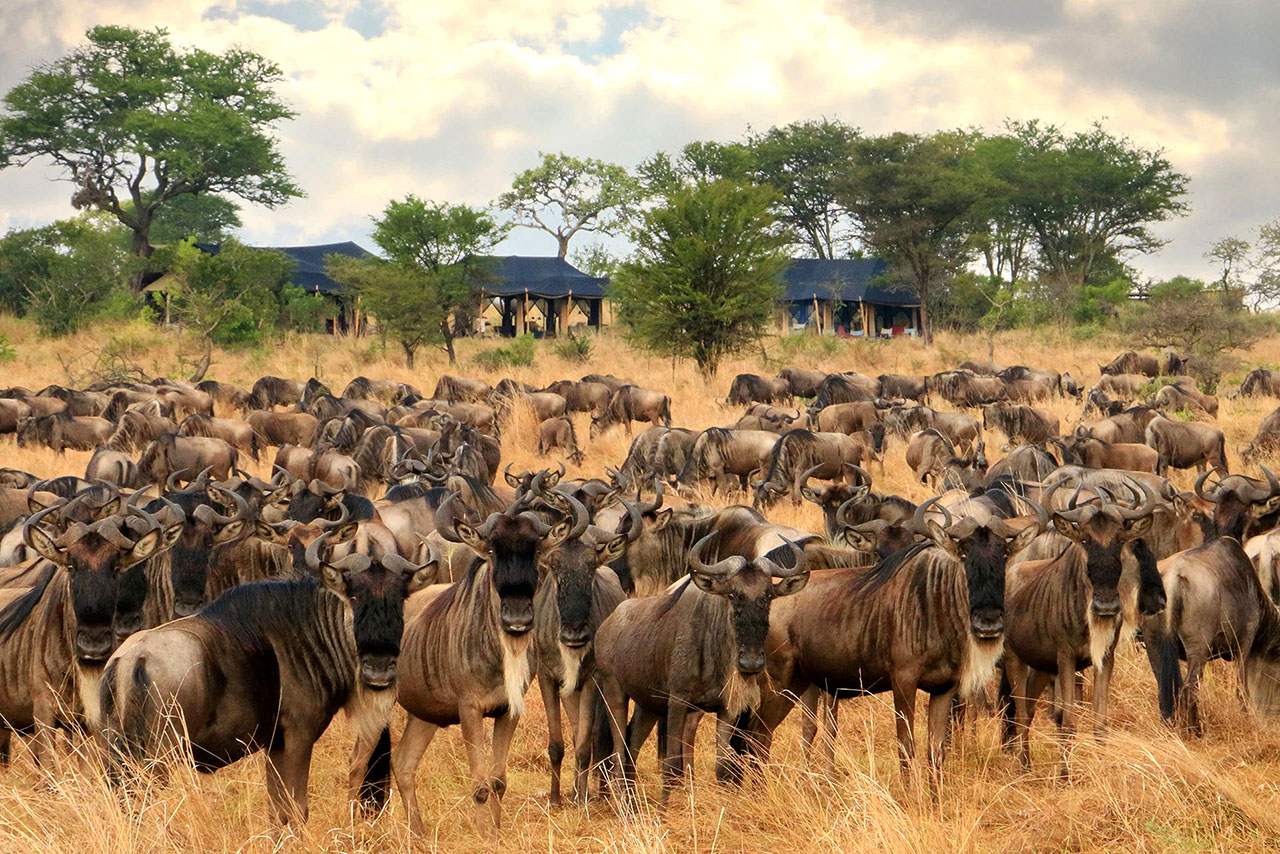
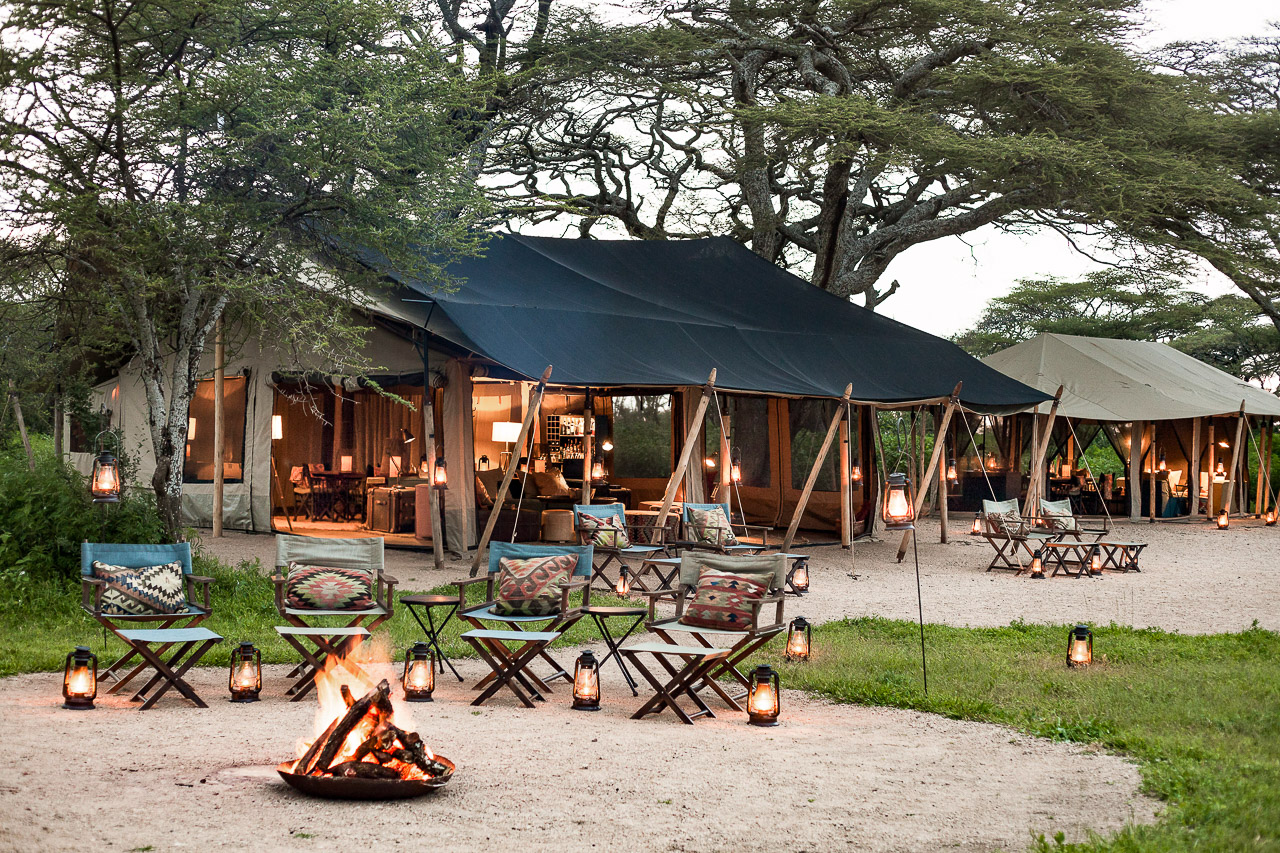
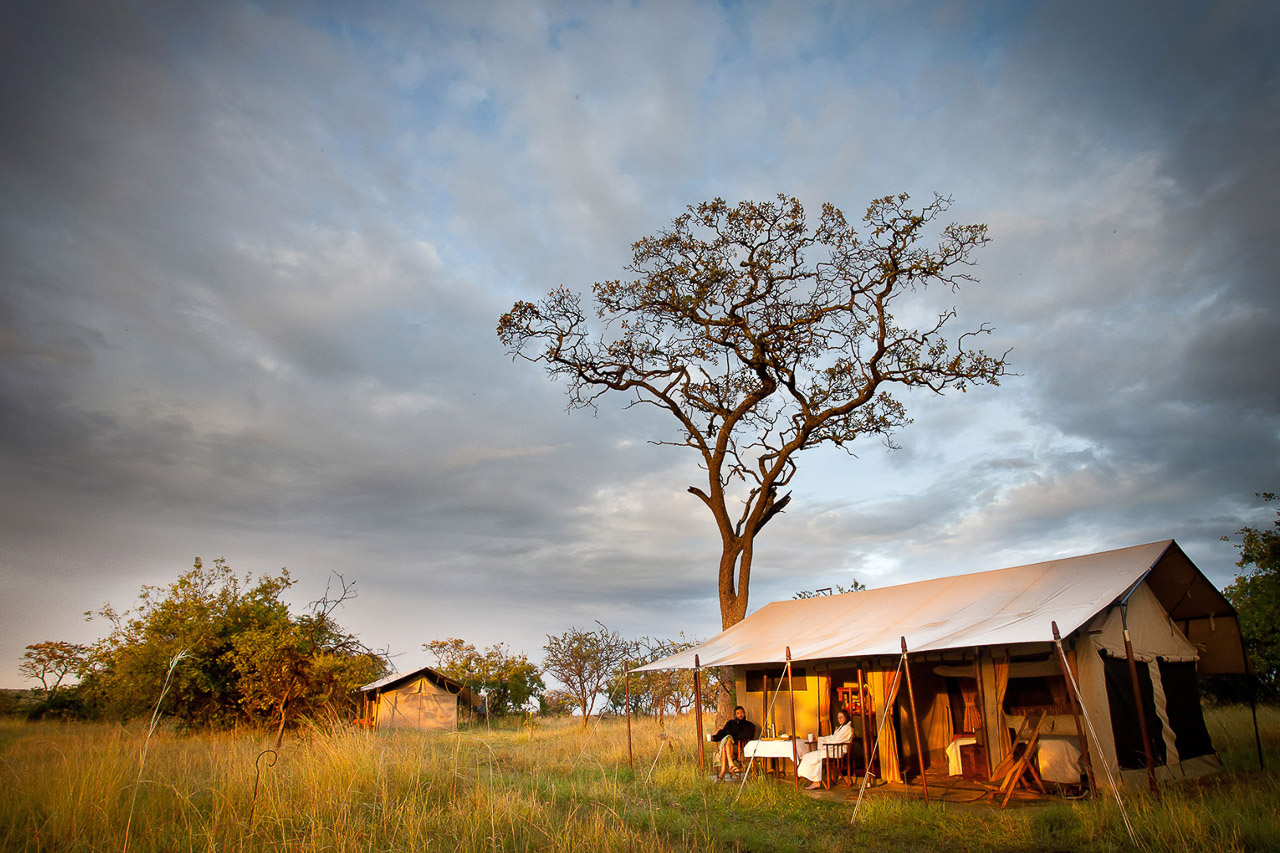
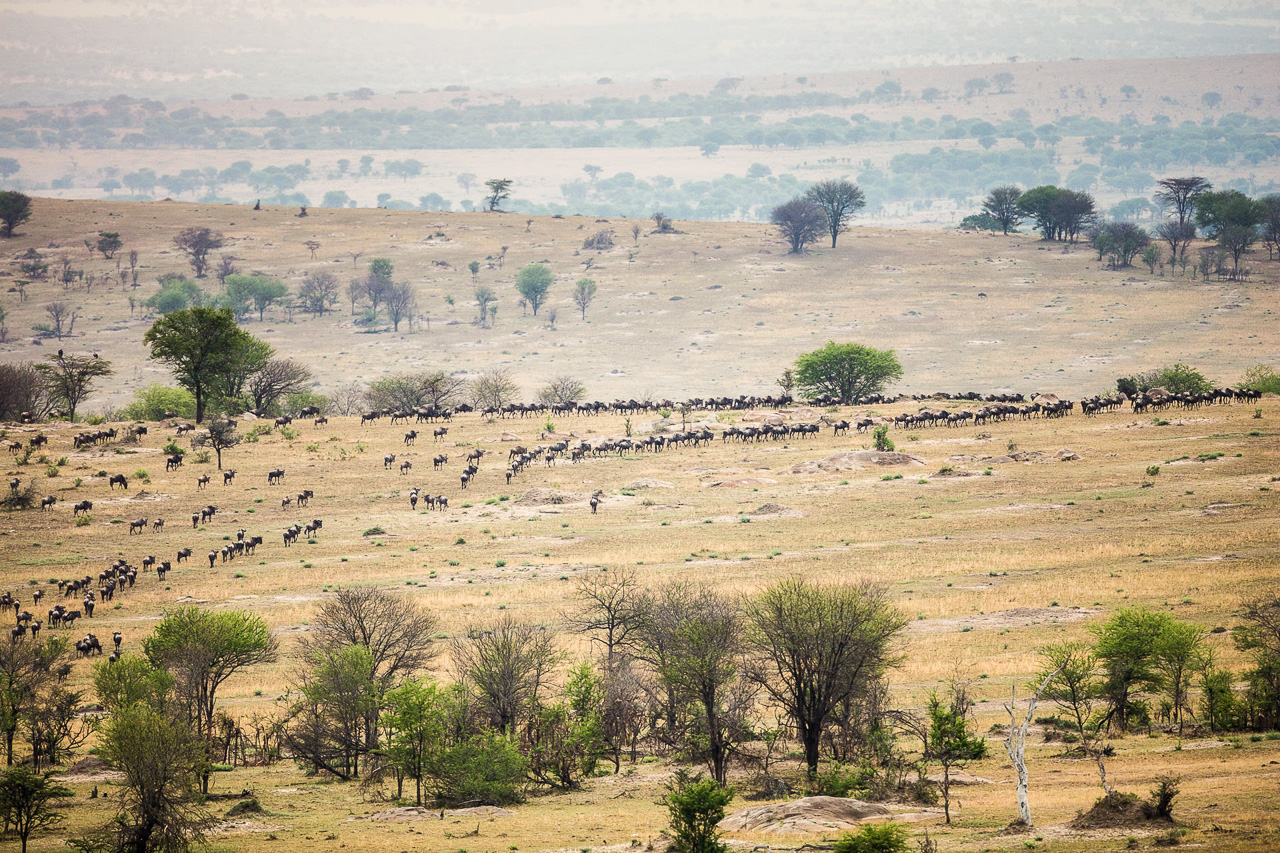
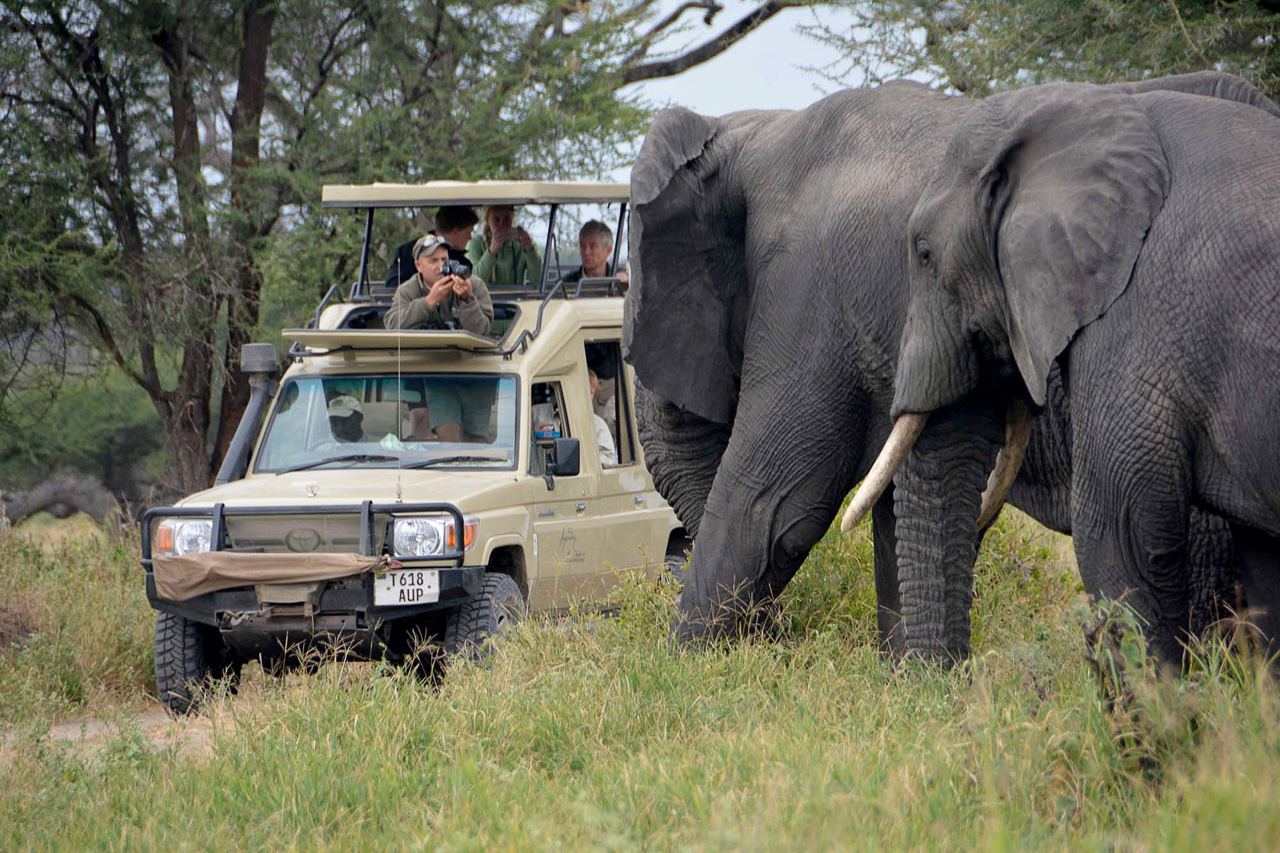
Accommodation
Nyasi Tented Camp is a particularly elegant tented camp with a real „Out of Africa“. In the cosy lounge tent you can browse through beautiful safari coffee-table books, review your snapshots of the day or have interesting conversations. A campfire is part of the daily routine and whenever possible dinner is served outdoors.
The camp is divided into two parts that are run independently, with a main building on each side. One side includes six double tents and the other side features two double tents and one large family tent with two double beds and two en-suite bathrooms. The 'family tent' side can be booked privately for groups or families.
Nyasi Tented Camp is situated on the northern side of the Mara River in the Lamai area. The closest airstrip is Lamai Airstrip.
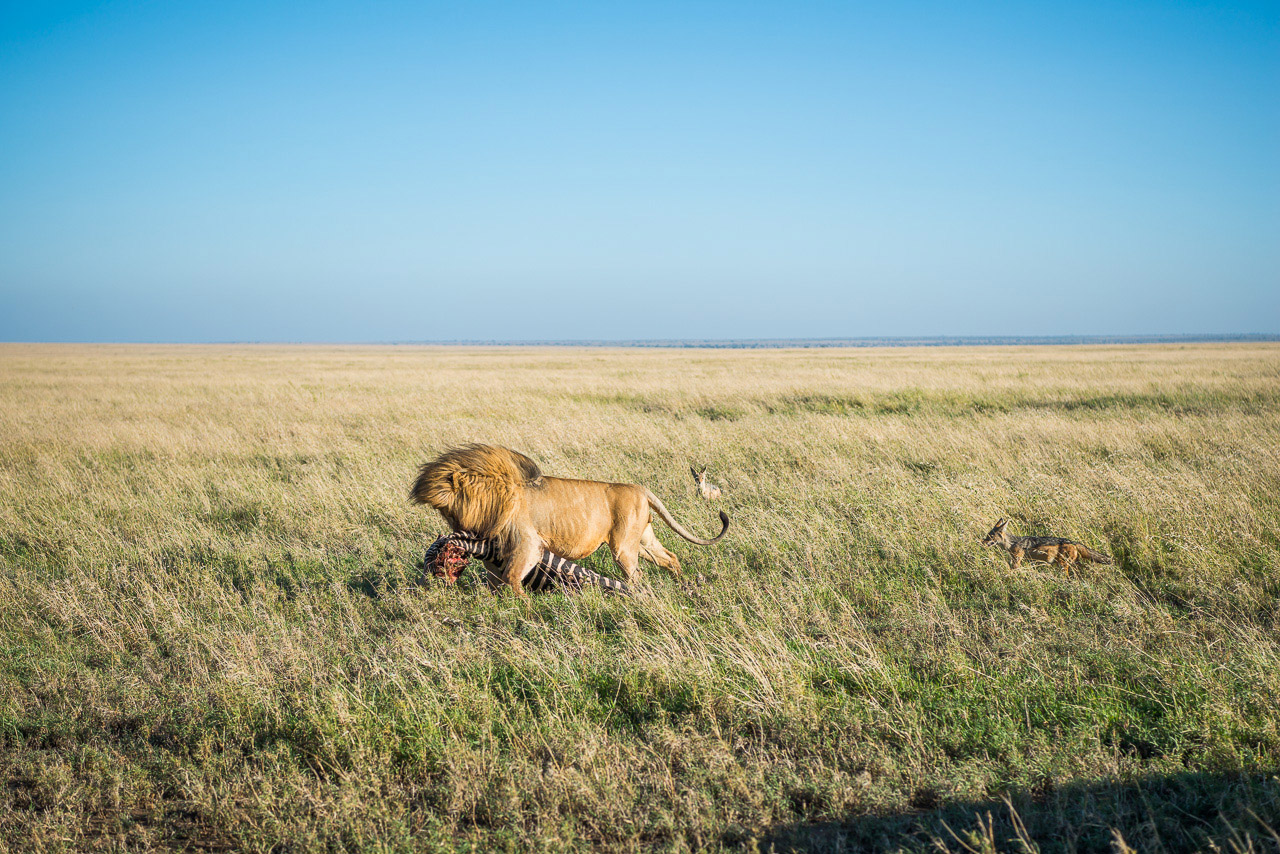
We recall Bernhard Grzimek’s television series and his descriptions of the wildlife paradise that is the Serengeti. The endless grassy plains are deeply impressive and the Serengeti is without doubt one of the most attractive safari destinations in the world.
If you’re in the right place at the right time, it is possible to experience the huge herds of wildebeest (up to two million), with some half-a-million zebra and a couple of hundred thousand Thompson’s gazelle, impala etc… in tow – accompanied by a couple of hungry lion, hyena and cheetah. The spectacle reaches its pinnacle in the north of the Serengeti, when the herds cross the Mara River.
The Serengeti ecosystem includes the actual national park (approx. 15’000 km²) and the bordering protected areas; chief among them is the Maswa Game Reserve in the southwest, the Grumeti and Ikorongo game reserves in the northwest, the Maasai Mara in the north, and Loliondo and the Ngorongoro Conservation Area in the east. The plains in the south comprise for the most part treeless flatlands that stretch out to the horizon. Typically, the plains of the Serengeti are punctuated by tree-covered granite outcrops known as ‘kopjes’, which provide the perfect resting place and observation post for predators. The northern part of the Serengeti is hillier with more vegetation.
The majority of guests travel to the camps that are located in the area where the migrating animals happen to be. If you wish to be alone, then look for a camp where the migration is NOT currently passing through, or combine several camps. There is an abundance of wildlife everywhere, mainly cheetah, hyena, jackal, lion and leopard, which are somewhat more difficult to find. In addition to wildebeest and zebra, there is a good concentration of topi, Grant and Thompson’s gazelle, eland and kudu etc… Elephant and buffalo are also present, but not in great numbers. Rhino also live in the Serengeti, but are naturally very shy creatures and therefore difficult to find.

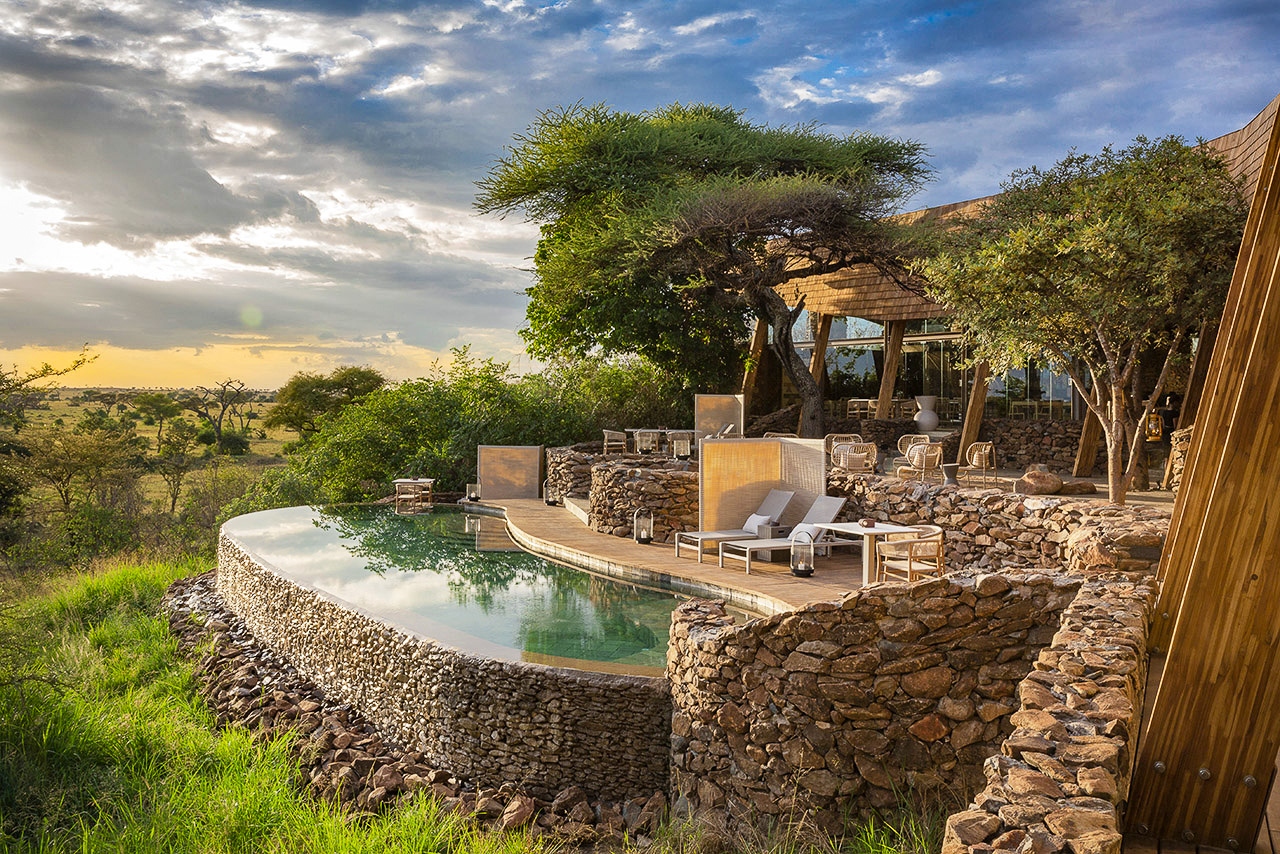
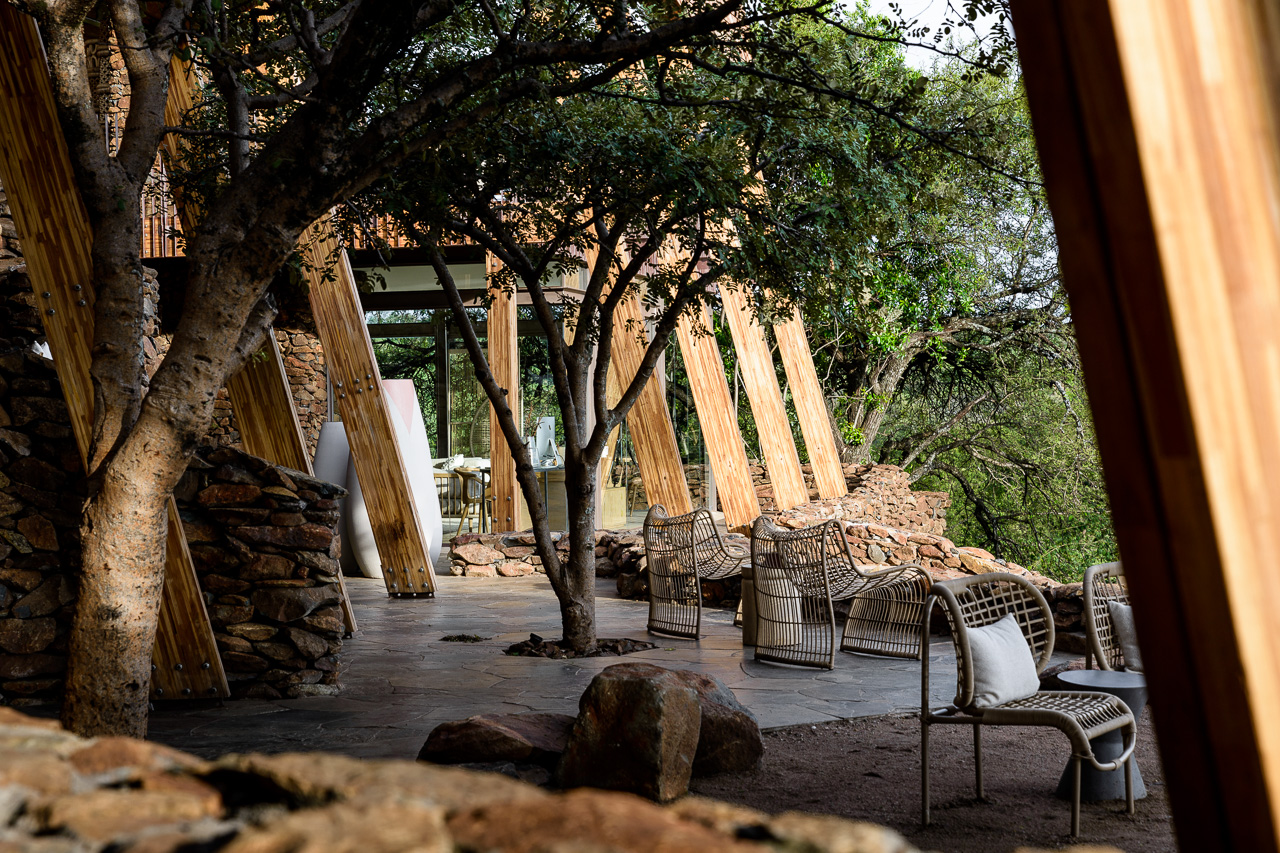
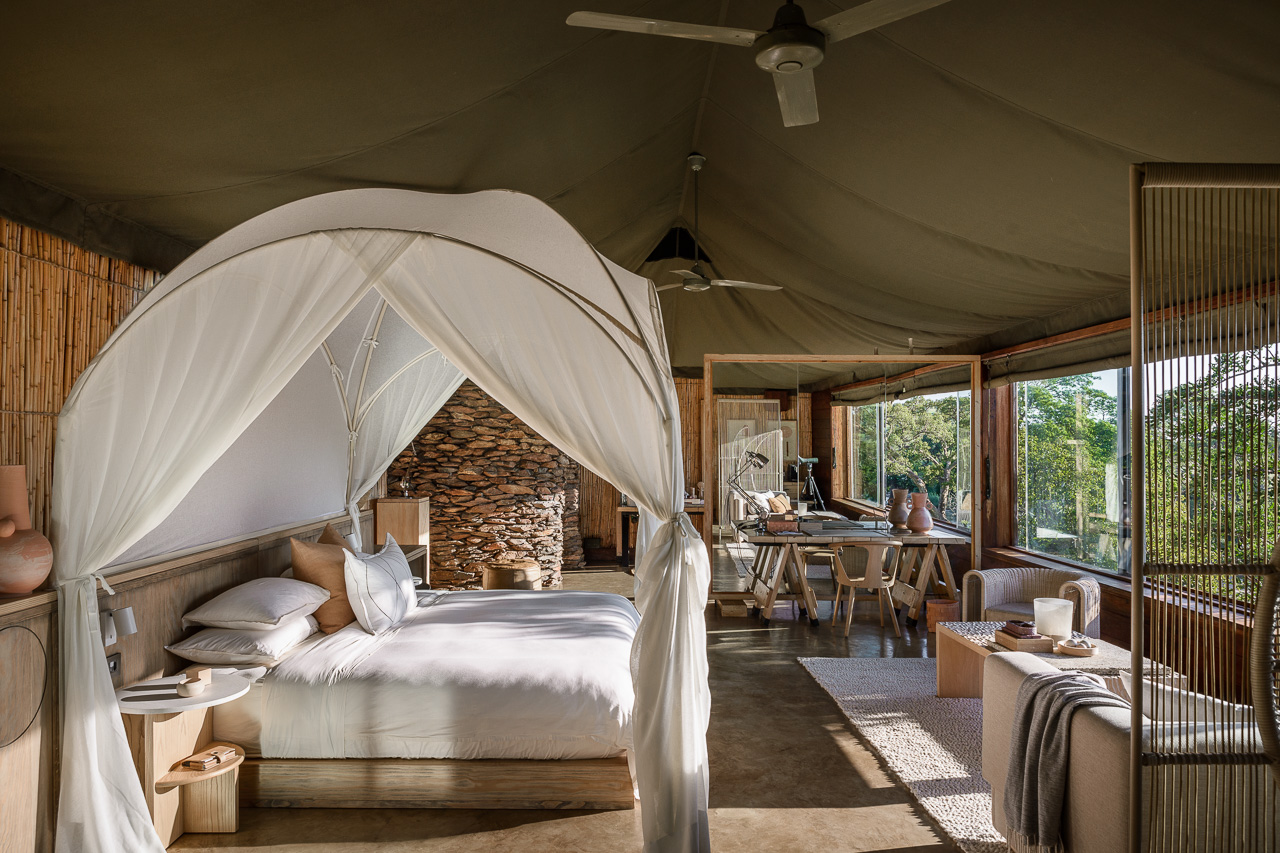
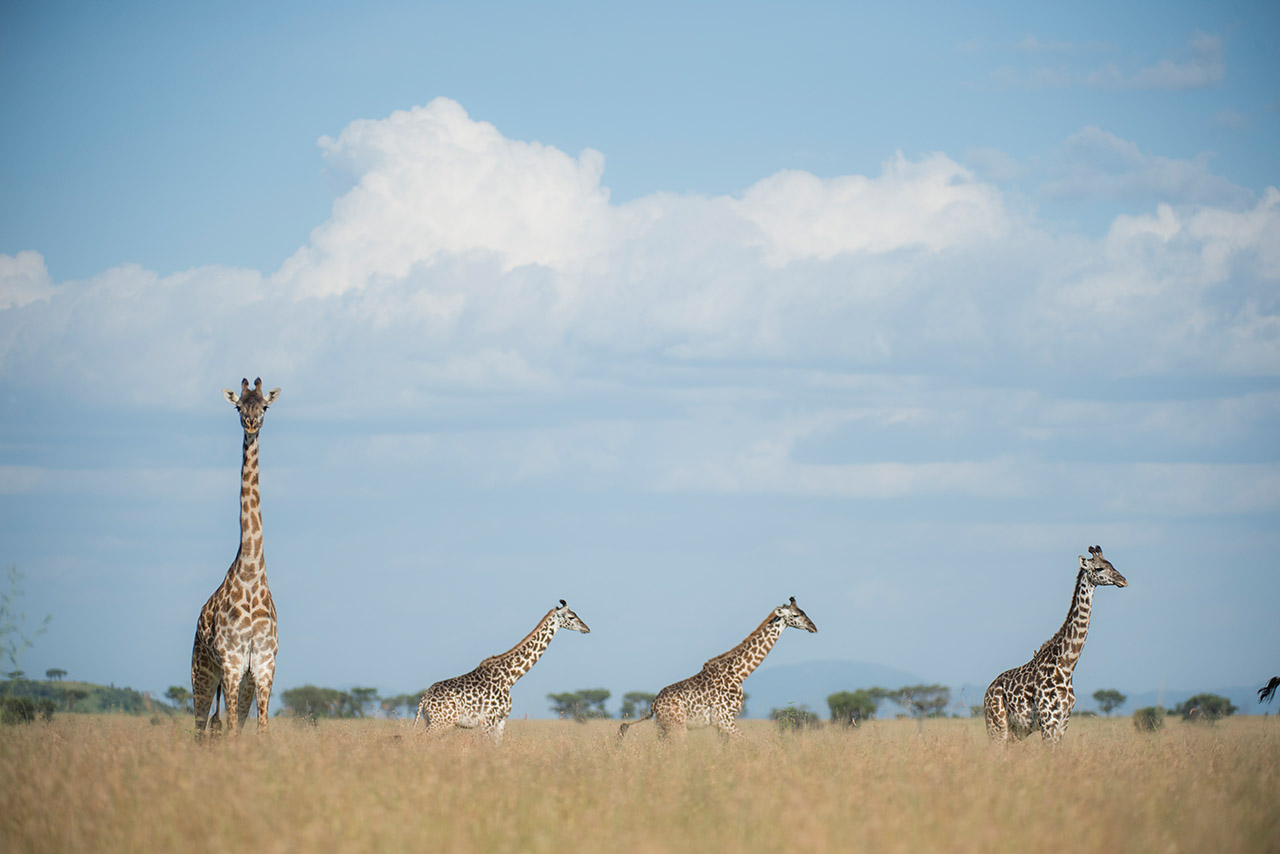
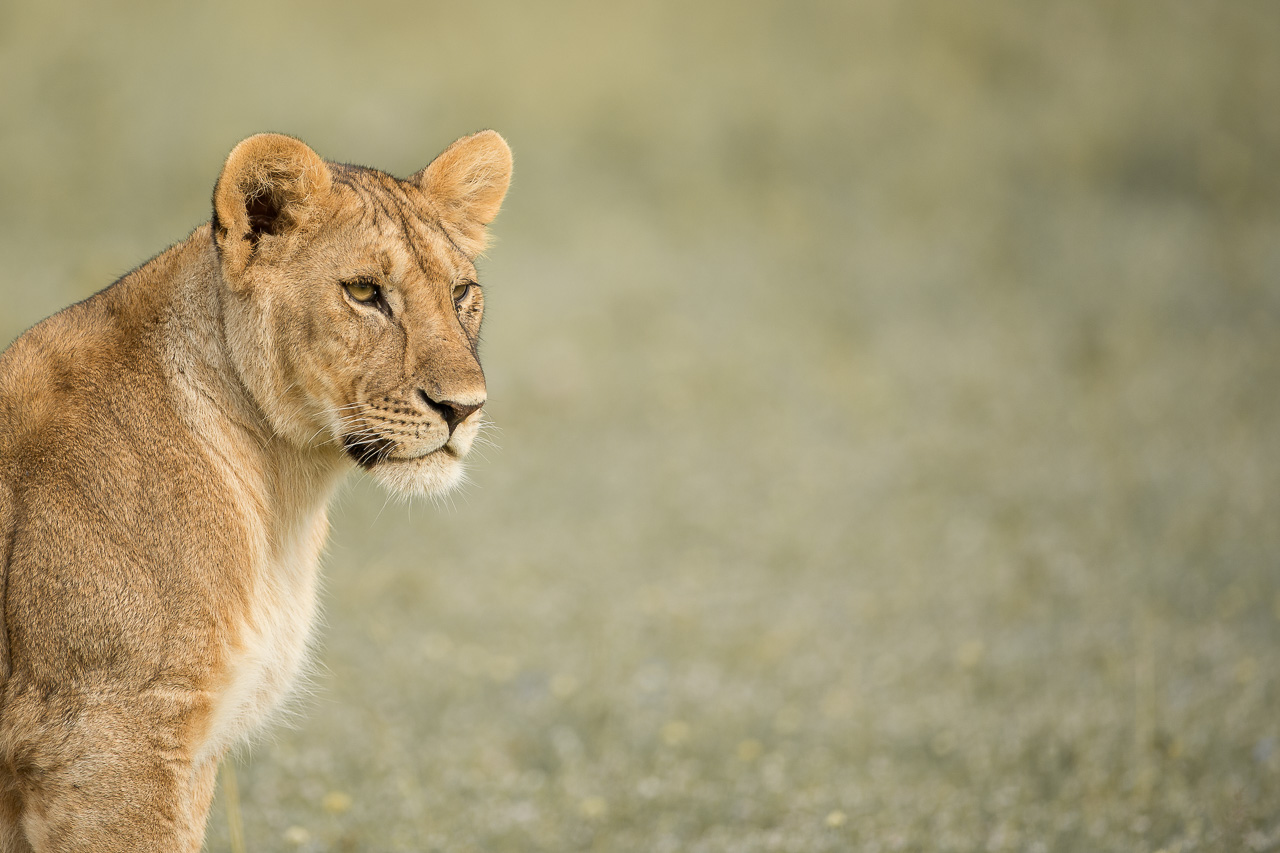
Accommodation
Faru Faru is modern and chic – nestled under the canopy of high trees it offers an almost tropical holiday feeling, which is sympathetically accentuated by the small sandy beaches deposited around its swimming pools.
Faru Faru comprises nine luxury air-conditioned suites, each with its own bath, open-air shower, lounge, minibar and private veranda with loungers. Beautifully decorated with light-coloured furniture and fitted with cool stone floors, the suites also feature glass front walls that open at the touch of a button.
Families can either book the 2-bedroom suite, situated close to a waterhole at the rear of the lodge and featuring two bedrooms, a lounge and a private plunge pool, or the family suite, which essentially comprises two adjoining standard rooms.
The main building boasts a lounge, bar, library and dining room with an open fireplace near one of the two pools to the front. The complex is built over several levels enclosed by various small stone walls. Tucked away around a corner, the second pool and its sandy beach offer a higher degree of privacy.
The camp is accessed by air via Sasakwa Airstrip. The journey from airstrip to Faru Faru takes approximately 50 minutes.

The reserve was created by the Tanzanian government in 1994 in order to protect the path of the annual wildebeest migration and the indigenous biodiversity of this vast and important ecosystem.
In 2002, the Grumeti Community and Wildlife Conservation Fund (now known as the Grumeti Fund), a not-for-profit organisation, was granted the right to manage and conserve these 350,000 acres, for the benefit of Tanzania, Africa and the world. Four years later, Singita took over the management of the property to enhance low impact, luxury tourism, at the request of the concessionaire.
As the custodian of more than 350,000 acres of the world-renowned Serengeti ecosystem in Tanzania, the Grumeti Fund is responsible for the reintroduction and recovery of stable wildlife populations, while ensuring that neighbouring rural communities benefit tangibly from these natural areas.
Faced with challenges including uncontrolled illegal hunting, rampant wildfires and spreading strands of invasive alien vegetation when they took over the management of the area in 2003, the Fund dedicated itself to transform severely depleted wildlife numbers into thriving populations once more.
Restoring this once barren and highly degraded region to a flourishing wilderness, their successes include the remarkable recovery of many species – including buffalo, wildebeest and elephant populations, and in 2019, the Fund carried out the largest single relocation and reintroduction of 9 critically endangered Eastern Black Rhino.
The Trust also manages an onsite Environmental Education Centre for school teachers and children to immerse themselves in Outdoor Education and fieldwork, and a world-class culinary school.

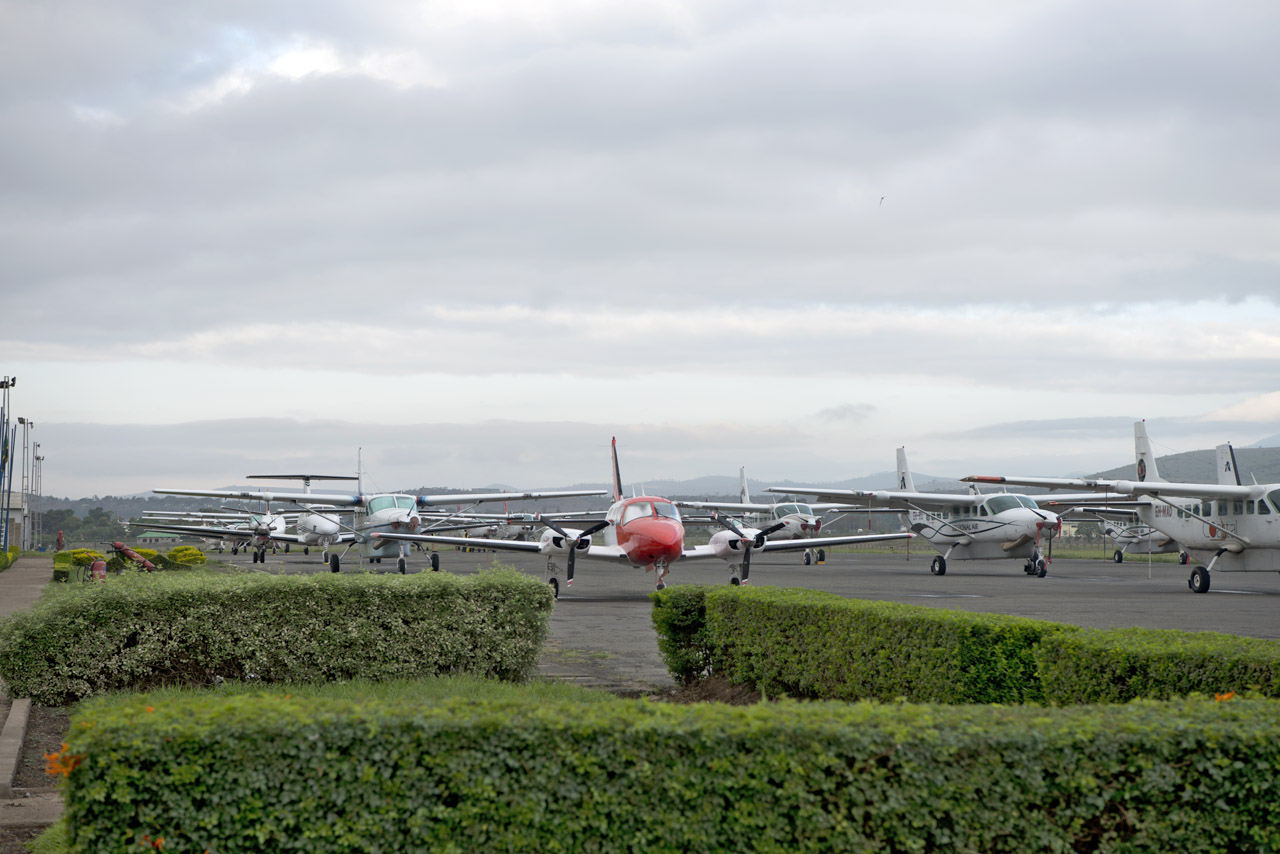
Basic Information
Individual trip with private guide and private 4x4 vehicle for Arusha - Tarangire - Manyara - Ngorongoro. Activities in these areas will be conducted on a private basis with your own guide and vehicle.
Duration 10 nights. Min 2 guests. Minimum age 8 years. Weight limit of luggage 20 kg. Luggage in one soft bag only.
Includes all transfers from Arusha to the hotels/camps to Arusha
- Arusha Villa: Standard Room. Breakfast.
- Little Chem Chem: Standard Room. All meals, drinks (except premier brands), laundry service, private vehicle / guide provided by the lodge.
- Gibb's Farm: Standard Room. All meals.
- Nyasi Tented Camp: Standard Room. All meals, drinks (except premier brands), laundry service, private vehicle / guide provided by the lodge.
- Faru Faru: Standard Room. All meals, drinks (including wines from the cellar, only french champagne exlcluded), laundry service, twice daily shared activities with one of the camp guides.
Learn more about these areas












